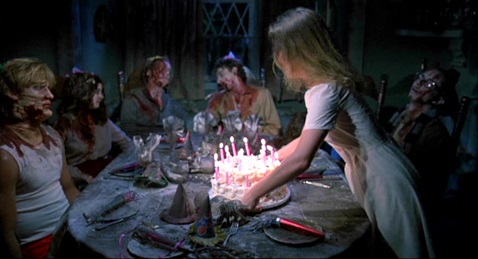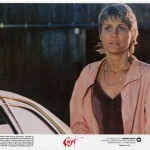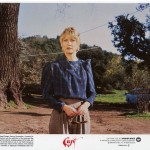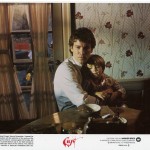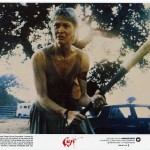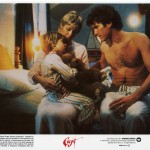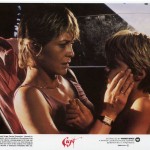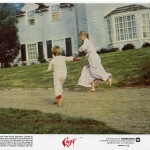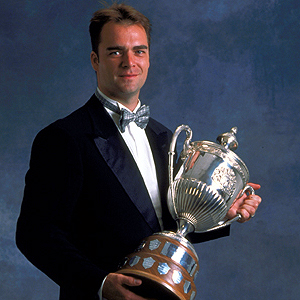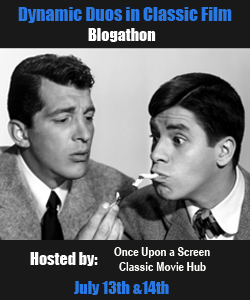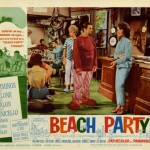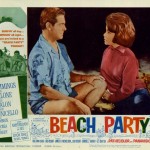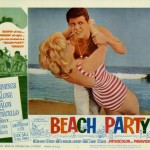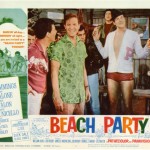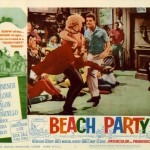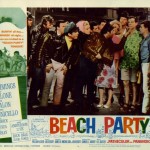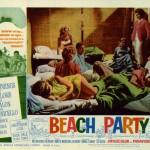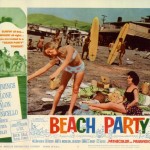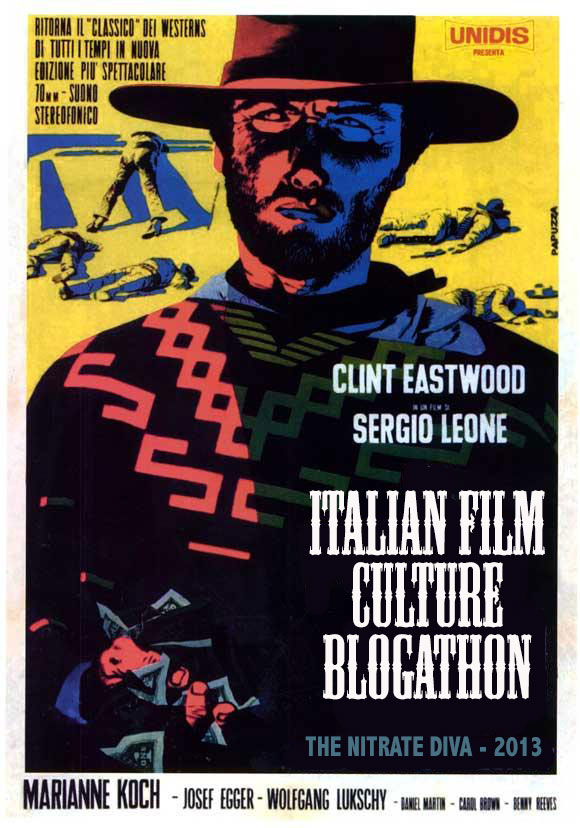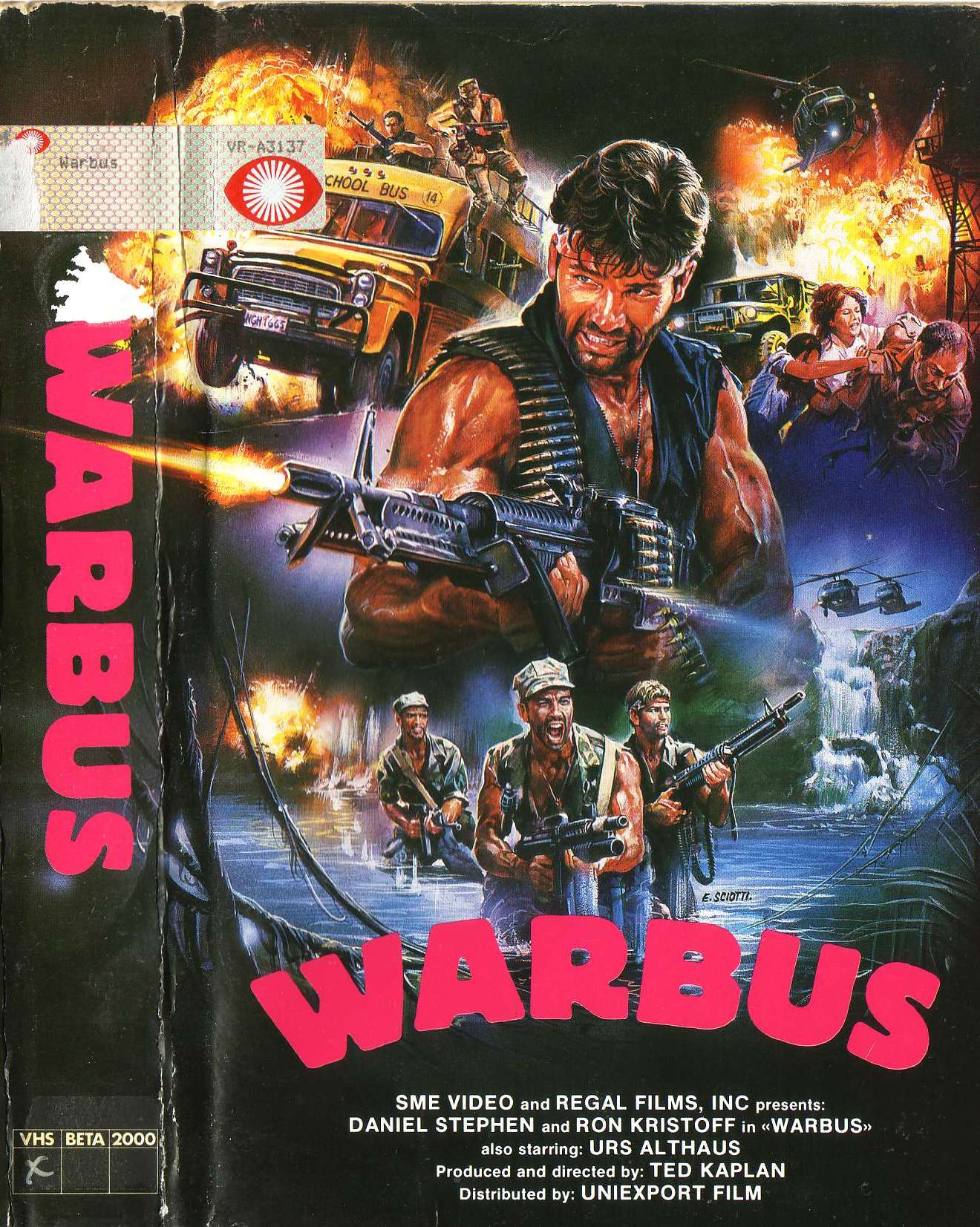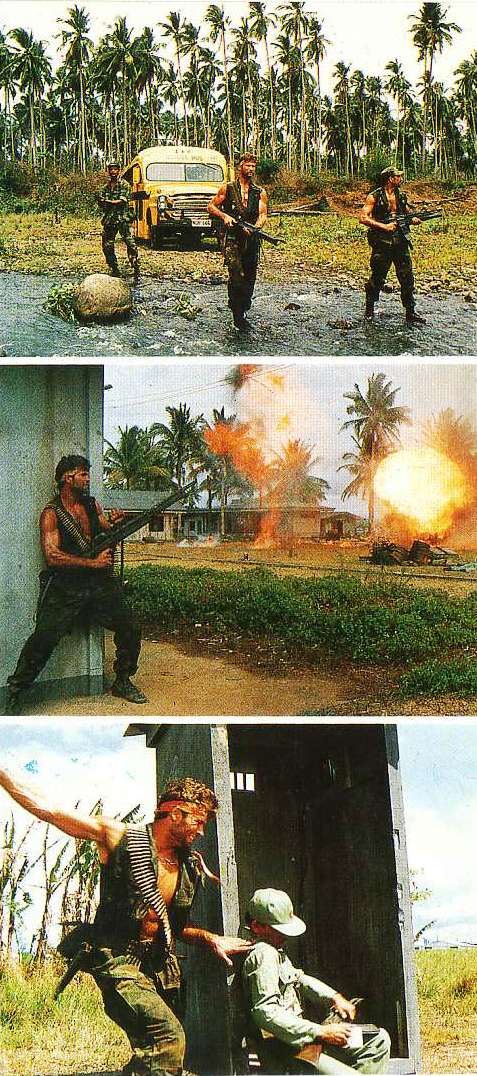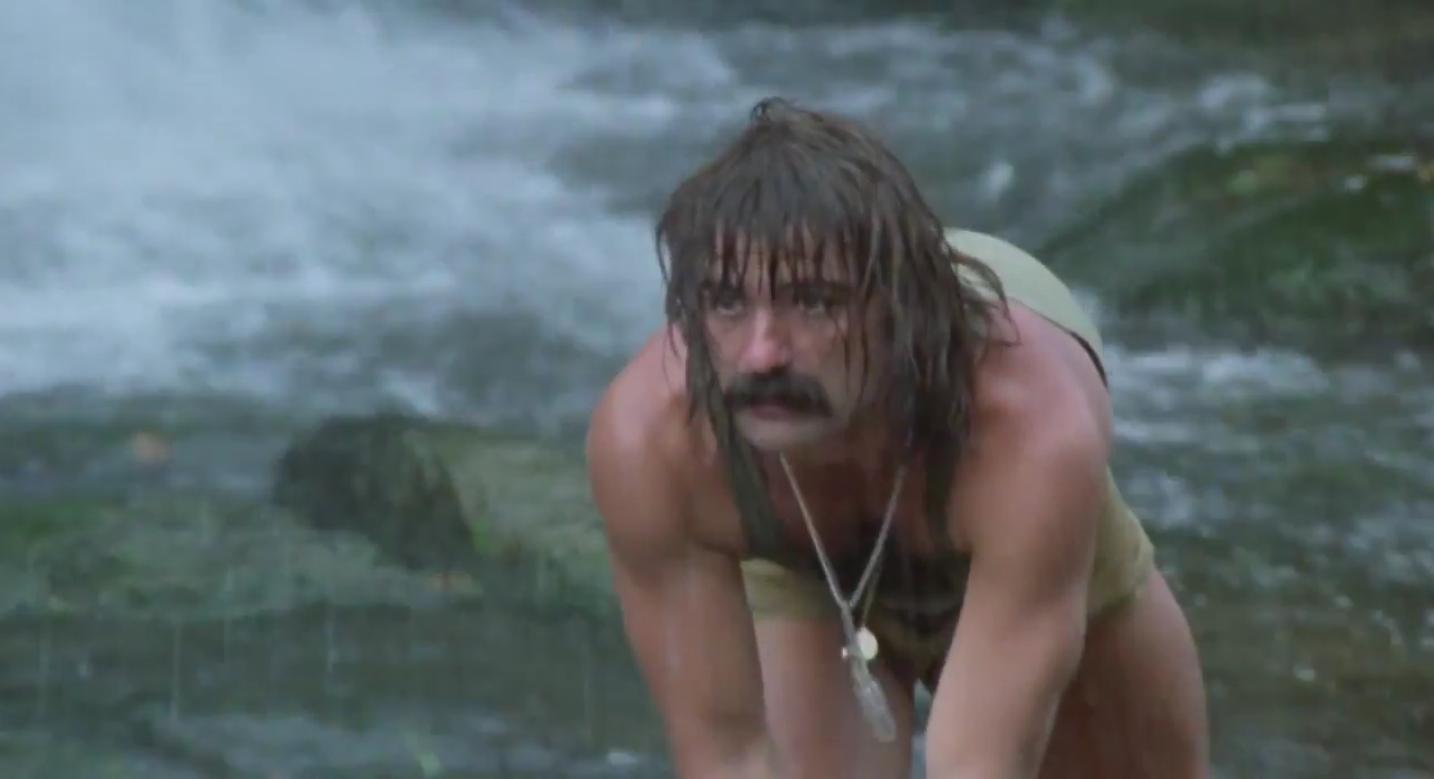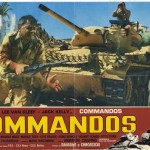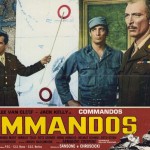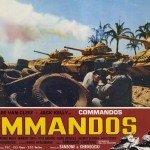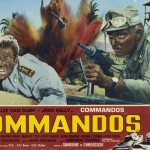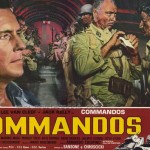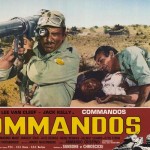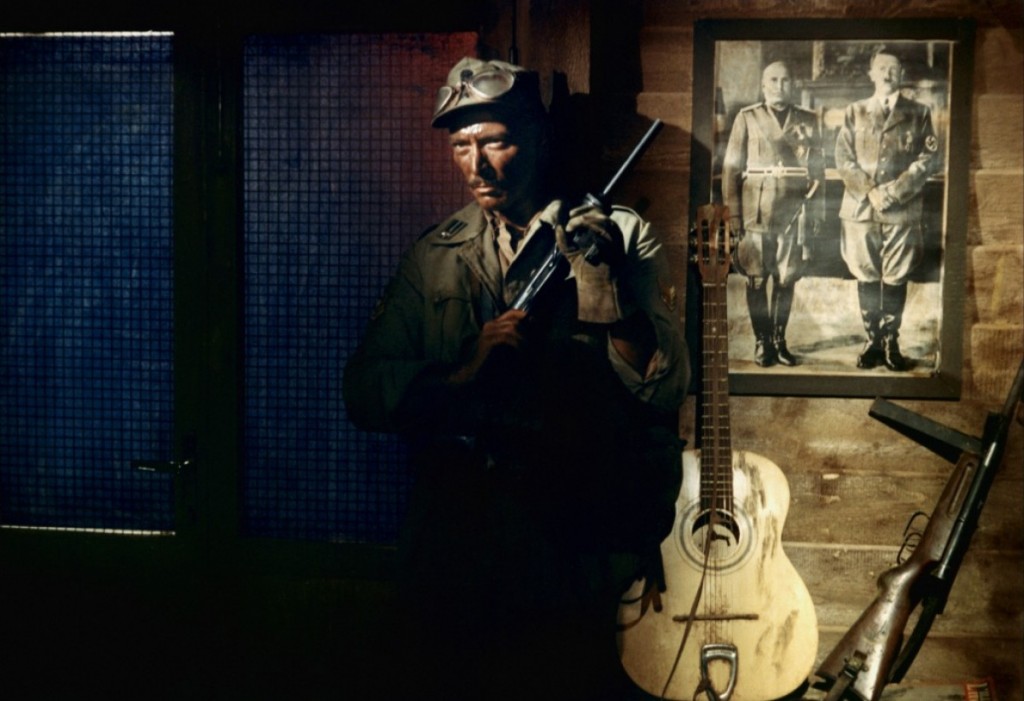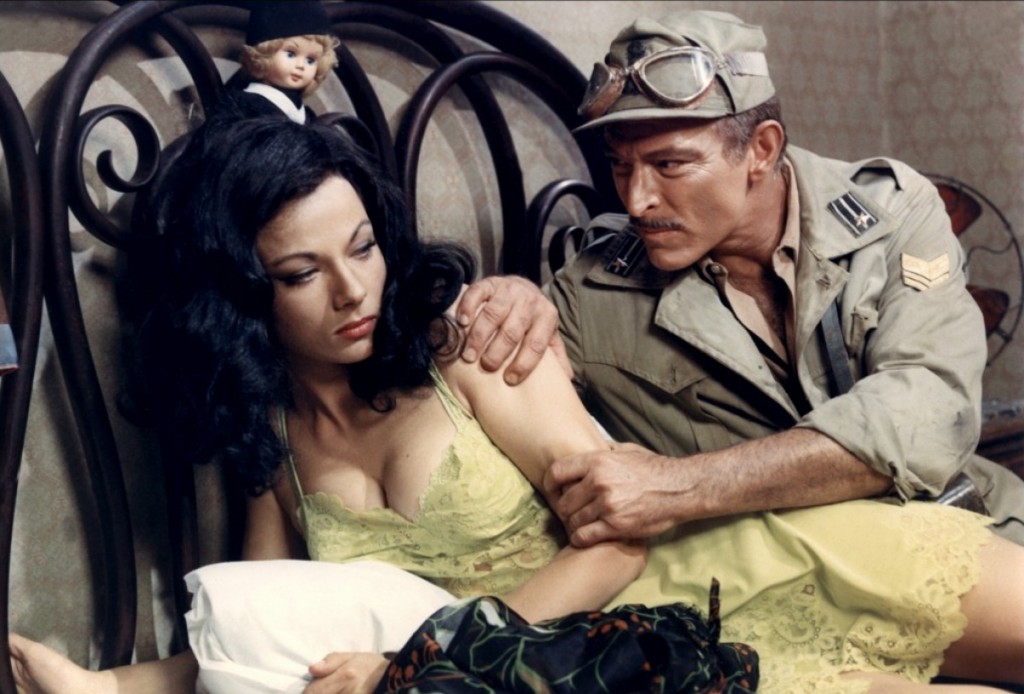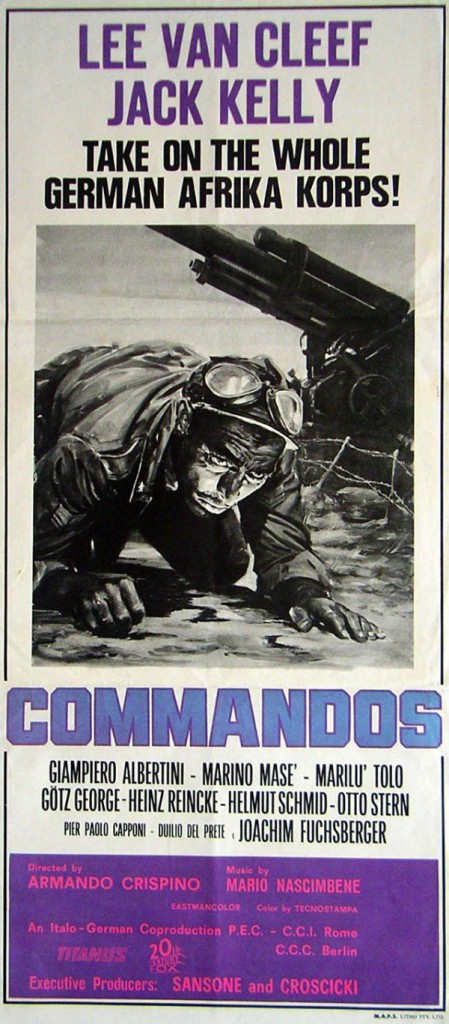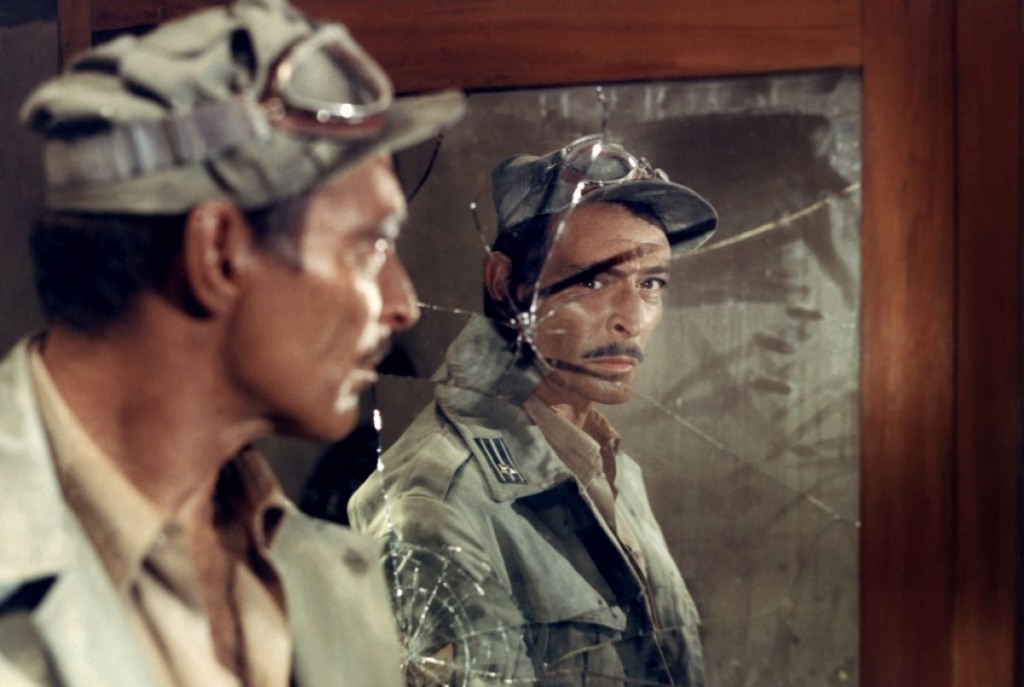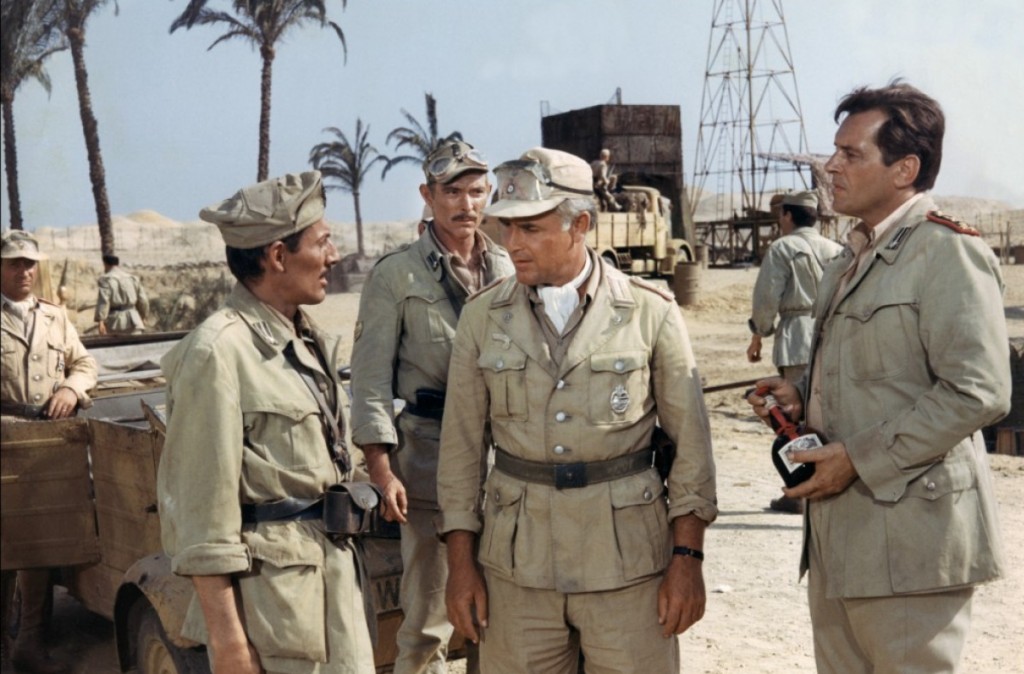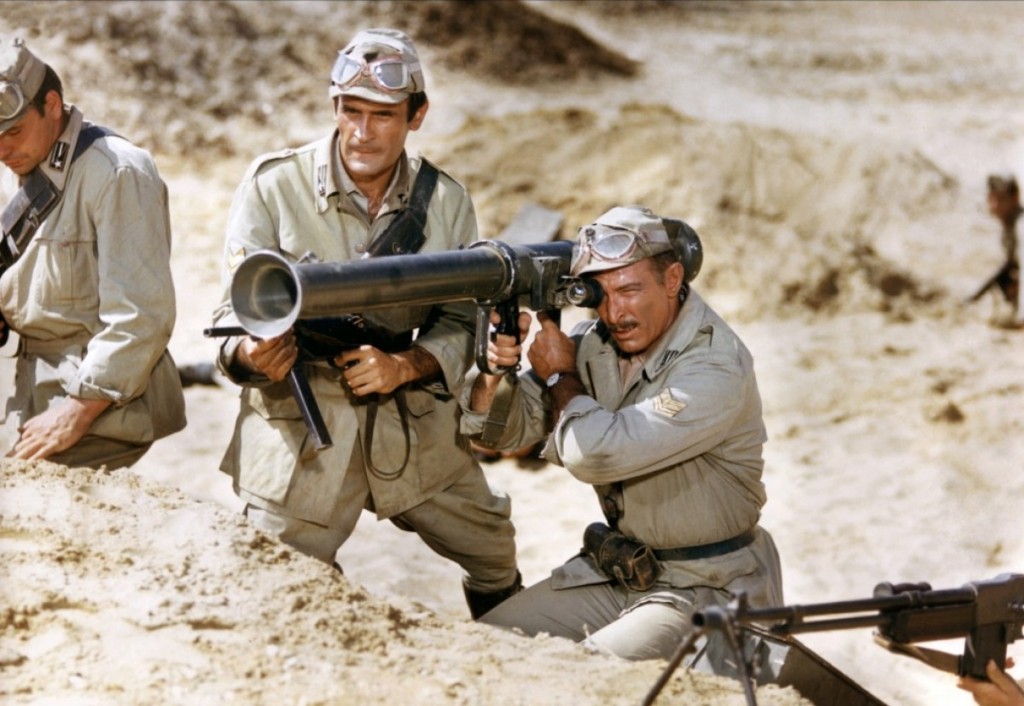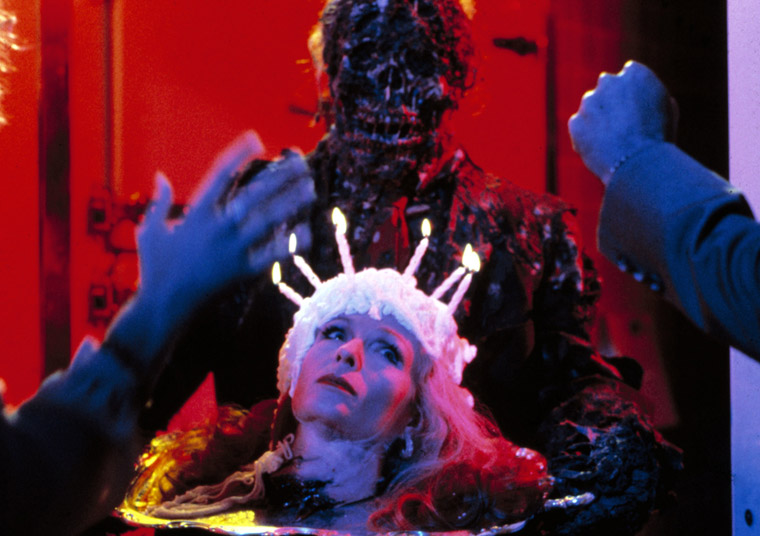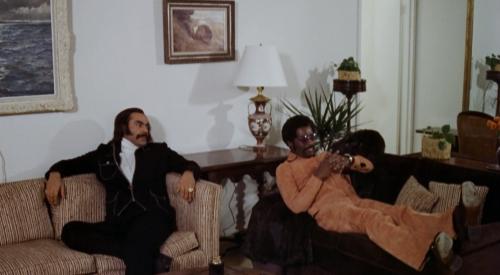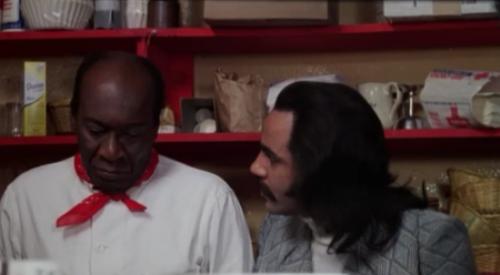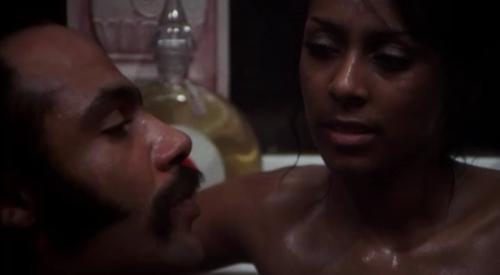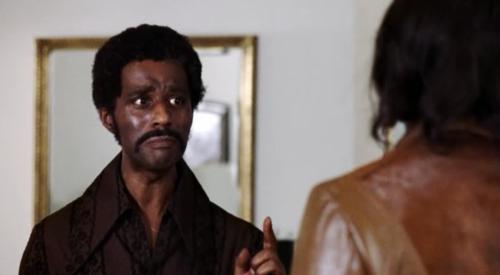Archive for Anniversary
Four More Years! Four More Years!
Sure, posts have been pretty scarce these past few years, but “That is not dead which can eternal lie.”
Remember, Remember the 5th of November…
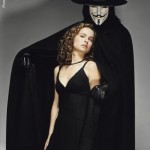
“Remember, remember!
The fifth of November,
The Gunpowder Treason and Plot;
I know of no reason
Why the Gunpowder Treason
Should ever be forgot!”
– Alan Moore after
Rev. T.F. Thiselton-Dyer’s
British Popular Customs,
Present and Past.
featuring “Touched” by VAST
Today is the Day of Dredd 2014

Judge Anderson
demands that you:
- Buy Dredd
- Stream Dredd
- Watch Dredd
- Share Dredd
And here, in its entirety, is the brilliant not for profit fan film Judge Minty. This short film demonstrates just how much can be accomplished on a limited budget with inspiration, blood, sweat, and (I would imagine) a fair share of tears.
30 Years Ago Today…
(A Dozen Diabolical Dogs – #1: Cujo)
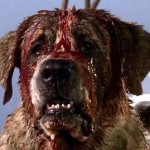
It should’ve been obvious, the evil dog that all other evil dogs are compared to, sometimes literally.
Cujo is the tenth novel by celebrated horror author Stephen King (counting three under his Richard Bachman pseudonym). Written during a particularly dark period in his struggle with alcoholism, the novel serves as a treatise of sorts on the links between mental illness and violence and the gray area where culpability lies.
The name “Cujo” comes from the alias “Kahjoe” of Symbionese Liberation Army founding member Willie Wolfe. At the height of their violent revolutionary activities, the press often misspelled the name. The SLA and their leader, Donald DeFreeze, served as nightmare fuel for King, with the latter directly inspiring the creation of his recurring villain Randall Flagg.
The plot of the novel and film adaptation are largely the same, though there are distinct differences in resolution that I will not go into here to avoid ruining either. The basic premise is almost too simple. A mother and her panicked son are stuck in their P.O.S. Ford Pinto while the unrelenting sun threatens to give them heatstroke and a rabid St. Bernard (the eponymous Cujo) lurks outside, waiting to rip their throats out.
Other than the ending, the other major deviation from page to screen lies in the subtext. The film deals primarily with the family drama portion of the plot, with Cujo serving merely as catalyst and antagonist, mindlessly rabid and driven almost exclusively by primal instinct. By having a portion of the novel from Cujo’s own perspective, we see firsthand his slow degeneration into rabid savagery and his desire to do what he knows to be right. Alongside subplots of domestic violence and infidelity, Cujo’s plight is a sympathetic one.
“It was a goddam fragile world, as fragile as one of those Easter eggs that were all pretty colors on the outside but hollow on the inside.” — Stephen King, Cujo
Stephen King teaches a harsh lesson. You’re never truly rid of the childhood monster lurking in your closet. That nameless dread just moves with you, from the bedroom to the boardroom, to your own child’s school, into your marriage bed instead of under it.
Admittedly, I have no earthly idea how such themes could be communicated in film. Dog narration would undoubtedly have made the entire affair laughable outside the hands of an avant-garde director like Nicolas Winding Refn or Lars von Trier. The small town suburban life segments would likely have ended up with a decidedly surreal tone, however. Maybe it’s best they kept things simple for movie audiences.
It is uncertain whether or not original director Peter Medak (The Changeling) would have been able to pull off a film with a tone so unfathomably dark. He was replaced after only a few days of shooting by Lewis Teague (Alligator). Looking at their lists of respective credits, I would have thrown my money after Medak, but hindsight is, as they say, 20/20.
Teague had some definite assistance in the form of impressive cinematography by Jan de Bont (Speed, Twister, and The Haunting). Jan de Bont deconstructed a good half dozen Ford Pintos to get the claustrophobic interior shots used throughout the latter half of the film. Luckily, they didn’t need Jaguars, so they got off cheap.
One of the team’s greatest achievements was the construction of dual sets for Tad’s bedroom, a normal sized set when lit and an elongated set for Tad’s fearful slow-motion sprint to his bed through darkness. An innovative overhead shot with the camera flipping upside-down as he dives/falls into the bed makes the brief scene rather iconic and one of my favorite depictions of irrational childhood phobias. The sequence also parallels nicely with later action when Tad’s mother, Donna, must judge the distance from the besieged car to the perceived safety of a front porch or to a possible weapon.
Cujo (1983)
Our film opens with a frolicking bunny, not exactly the paragon of menace, the Rabbit of Caerbannog notwithstanding. The score by Charles Bernstein does a good job of dancing between happy-go-lucky trilling and more sinister tones. The latter hit a crescendo as our title St. Bernard steps into frame, clearly with malicious intent toward the fuzzy bunny.
The exact number of dogs used for the film is unknown with different cast and crew members citing various numbers, ranging from five to a dozen. Thankfully, none were hurt making the film. Likewise, the nimble rabbit escapes harm.
Cujo, however, is not so lucky within the context of the story. He runs the rabbit into a hole and gets his big muzzle stuck right in. Cujo’s frustrated barks rouse a flock of bats, getting him a bite on the snout for his recklessness. Our inciting incident lies less than four minutes in. That’s wasting no time.
Just as the words “Based on the Novel by Stephen King” hit the screen, we cut to a creepy looking house covered in shadows like ivy. Within this sprawling home live the Trentons, Donna, Vic, and their young son, Tad. This trinity forms the core of Cujo.
While working primarily a television actress in the late 1970s, Dee Wallace (Donna Trenton) was no stranger to horror, having appeared as the married daughter in The Hills Have Eyes (1977) and as the lead protagonist in The Howling (1981). Before Cujo, she would be best known as the mother in E.T. the Extra-Terrestrial (1982).
With all due respect to author Stephen King, I do not agree with his assessment that Dee Wallace deserved an Oscar nomination for her performance. Not even close. In his novel, Donna Trenton is a complex woman coming to grips with the realization that time is not on her side, that she very well may have to shelve her personal hopes, dreams, and aspirations to adopt the role of dutiful mother and wife.
The film version of Donna is a helpless, incapable shrew, the kind of career dependent who cannot change a tire or even a light bulb without assistance. Her infidelity seems casual, not a cry for help or relevance, but a selfish indulgence at the expense of her loving family. To see her trapped in that car with a screaming Tad validates every Lifetime Network “woman in jeopardy” cliché rather than being the last stand of a desperate woman.
Daniel Hugh Kelly fares better as Vic Trenton, but perhaps benefits from diminished screen time. Kelly was also a veteran of television, the third actor to play Frank Ryan on the long-running ABC soap Ryan’s Hope. Shortly after the release of Cujo, he would play the McCormick half of Hardcastle and McCormick for three seasons on ABC.
Last, but certainly not least, Cujo introduced 7-year-old Danny Pintauro to audiences. As Tad Trenton, “The Tadder”, Pintauro primarily serves as a plot device for his parents’ conflict. Other than obvious emotional scarring, he isn’t likely to walk away from the terrifying events of the film with any kind of epiphany. He doesn’t have any ambivalence or doubt, he just predictably wants a safe environment and a loving family around him. Pintauro’s professionalism, publicly lauded by many who worked on the film, likely helped him land the role of Jonathan Bower on all 196 episodes of the ABC sitcom Who’s the Boss?
Meeting his parents, it’s easy to see how Tad would grow up to be a panicky, neurotic little boy. There are some early hints of a supernatural threat, but Director Lewis Teague would abandon these notions under the idea that there was no way to keep them from appearing “hokey”. Our first obvious threat to this domestic bliss is the arrival of furniture stripper/tennis patsy/trombone player Steve Kemp (Christopher Stone).
Vic thinks him just an element of local Maine color, but, unbeknownst to him, Steve is cuckolding him something fierce. The ironic bit about this relationship is that Stone was Dee Wallace’s husband in real life at the time, and played her character’s husband in The Howling (1981), where he would be the unfaithful one, albeit under the influence of lycanthropy.
When Vic’s Jaguar convertible starts acting up, he is directed to Joe Camber (Ed Lauter), the local shade tree mechanic. Lauter replaced William Sanderson (Blade Runner) at the same time Teague replaced Medak as director. Sanderson would get his shot at a similar role in Man’s Best Friend (1993), #11 on this list and covered almost exactly one year ago. Given the aggressive and abusive nature of Camber, Lauter was the better pick here. I just don’t see Dee Wallace being intimidated by Larry from Newhart.
It is when retrieving the fixed car that the Trenton family first encounters the Camber family dog, Cujo. There’s actually a clever bit of juxtaposition here as Donna first looks on Charity Camber’s matronly lot in life with a mix of contempt and horror then feels true terror when she sees the massive Cujo padding towards her vulnerable son.
Oblivious to the potential danger posed by the oafish pet, Tad is fascinated by Cujo. Despite musical cues and Donna’s trepidation (as well as that of the viewer), there is no evidence of anything untoward here. Cujo is still on his best behavior and doesn’t even muster up a growl at the visiting strangers.
This 1983 TV ad seems determined to keep Cujo’s identity as a rabid dog a secret.
The set of lobby cards and movie poster above also seem designed to keep the antagonist’s identity secret as there isn’t a single solitary image of the title pooch.
The Trenton Family troubles keep mounting as the Sharps Cereal Professor, created by ad-man Vic, is subject to a bit of a scandal. While his slogan is “Nope, nothing wrong here,” there is most certainly something wrong with thousands of people nationwide vomiting potent red cereal dye and fearing internal hemorrhaging. Stephen King does a great job of fitting in the kind of media-fed hysteria that typically ensues after these sorts of scandals, another irrational modern fear. More importantly, plot-wise, it means Vic must leave his family for ten days to deal with this crisis.
Over at the Cambers, an angle grinder does nothing for my own nerves and cuts right through Cujo’s rabies-addled brain. He eventually retreats under the front porch to get away from his noisy family and go gradually crazy in peace and quiet. There are some Camber Family subplots, but they get abbreviated for running time. The short story is that Joe’s wife and son are also conveniently heading out of town.
Despite a few teases, we’re very nearly halfway through the film, and no one has died. Test screenings that got to the car siege quicker reportedly didn’t fare well, however, as audiences just didn’t care about the characters. Admittedly, the slow build proves effective. When Cujo reluctantly retreats through the predawn mist, we know that it is the last time we will see him sane.
The weather posed a particular challenge for Director Lewis Teague. The aforementioned mist had to be manufactured with a naval fogger because the daily gloom took a day off when the scene was scheduled to be shot. The temperature was a greater issue. The car siege is supposed to be held through blistering, dehydrating heat, but, despite references to summer camp and the like, the film was shot during the dead of winter. In a clever bit of movie magic, Jan de Bont held a flame below the camera lens to create the illusion of late summer haze. Glycerine and water created false sweat. And there is, of course, the power of acting.
The end result, sadly, is a film I find to be sorely lacking, but noteworthy for a handful of achievements. Call it a near miss. In the wake of Carrie (1976), The Shining (1980), and Creepshow (1982), and with The Dead Zone (1983) and Christine (1983) getting released just months apart later that year, Cujo just doesn’t rate. It is a bit of an unfair comparison, as Lewis Teague just isn’t in the same league as such directing luminaries as Brian De Palma, Stanley Kubrick, George A. Romero, David Cronenberg, and John Carpenter.
The influence of King’s story and imagery have proven to be far-reaching. The nickname “CuJo” seemed a natural one for celebrated NHL goalie Curtis Joseph, being a portmanteau of his first name and surname. Despite going undrafted, Joseph was a three time NHL All-Star (in 1994 with the St. Louis Blues and in 1999 and 2000 with the Toronto Maple Leafs). In the XIX Olympic Winter Games, he played goalie for gold medal-winning Team Canada, fifty years to the day since their previous gold medal win. While his goalie mask often bore the visage of a snarling dog, a nod to his namesake, Curtis Joseph was recognized for his leadership and philanthropic endeavors by being awarded the King Clancy Memorial Trophy in 2000.
A good dog, indeed.
Unfortunately, the coveted Stanley Cup eluded “CuJo” for the entirety of his career. Amongst goalies who have never played on a Stanley Cup-winning team, he has posted the most career wins to date with 454. After playing for six teams in twenty years, posting 30-plus wins on a record five of them, Curtis Joseph retired in 2010. Despite his statistical achievements, Joseph has yet to be inducted into the Hockey Hall of Fame, and, without a Cup or Vezina Trophy and an unfortunate number two spot on the list of most losses by an NHL goalie, there is considerable debate as to whether he ever will.
We hope you enjoyed our little countdown of “A Dozen Diabolical Dogs”. Twelve dogs in thirteen months, but that was hardly my initial intention. It’ll be a while before I have the hubris to tackle another countdown of this scope, methinks. See ya ’round the kennel club!
50 Years Ago Today…
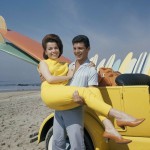
…Frankie Avalon and Annette Funicello took to the beach for the first time together on film.
The initial script for Beach Party (1963) was a tale of typical teens getting into typical trouble, but Director William Asher agreed to helm the film on the condition that it be turned into a more lighthearted musical with trouble free teens. At it’s heart, it is a story of three couples, though they don’t all start that way. In this respect, it most resembles Shakespearean comedy or commedia all’italiana (the film’s initial inspiration). Our feature couple, and the first characters we meet, are Frankie and Dolores (Frankie Avalon and Annette Funicello, respectively, but I hope I didn’t need to tell you that).
The single “Venus”, released in 1959, became Frankie Avalon’s first number-one hit on the Billboard Hot 100 chart, where it spent five weeks at the top and sold over a million copies. His musical success was fleeting, however, and by 1960, he transitioned to bit parts in films such as The Alamo (1960) with John Wayne. His first starring role was in Drums of Africa (1963), just one of many African adventure films using recycled footage from King Solomon’s Mines (1950).
By contrast, Annette Funicello was already a star. At age 12, she was personally selected by Walt Disney to be the last of the original “Mouseketeers” for The Mickey Mouse Club television show. Her work for Disney landed her high profile guest spots on both Make Room for Daddy and Zorro in February, 1959. Disney also transitioned her into feature films with supporting roles in The Shaggy Dog (1959) and Babes in Toyland (1961), both alongside Tommy Kirk, her future Pajama Party (1964) co-star. Beach Party was conceived with Funicello in mind, to play opposite teen heartthrob Fabian, but he was under contract to 20th Century Fox.
Being established properties, Bob Cummings and Dorothy Malone actually receive top billing on the promotional materials.
Charles Clarence Robert Orville “Bob” Cummings plays Robert Orville Sutwell. While Sutwell struggles to out-think the waves, Cummings was a surfer by hobby and Sutwell flies a plane later in the film, likely a reference to Cummings’ own aviation interests, fostered by his godfather, the pioneer Orville Wright. The first licensed flight instructor in the United States, Cummings was issued certificate #1. He briefly studied aeronautical engineering at the Carnegie Institute of Technology before the Stock Market Crash of 1929 and his family’s subsequent financial woes forced him to drop out.
Cummings transitioned into acting primarily because it afforded him a $14 per week salary while studying drama in New York City. He made his Broadway debut in 1931. Because British actors were in demand at the time, he traveled to England and learned to mimic the accent, eventually posing as an Englishman under the name of Blade Stanhope Conway.
After headlining the Ziegfeld Follies alongside Fanny Brice, he moved to Hollywood to begin a film career under the alias of wealthy Texan Bruce Hutchens. From the mid 1950s through 1962, he starred in a self-titled sitcom, first for NBC then CBS.
Dorothy Malone plays Sutwell’s assistant Marianne. Malone had been acting for twenty years before appearing in Beach Party. Mostly known for westerns, she took home a Best Supporting Actress Oscar for her portrayal of a spoiled nymphomaniac in Written on the Wind (1956). She’s considerably more sedate here, and while playing clearly the most sexually experienced member of the cast, she doesn’t don a bikini or surf.
Harvey Lembeck played Harry “Sugar Lips” Shapiro in Billy Wilder’s Stalag 17 (1953). His Cpl. Rocco Barbella was right-hand man to Sgt. Bilko, on The Phil Silvers Show and Lembeck kept the role through all 4 seasons. Here, he’s leather-clad lout Eric Von Zipper.
Eva Six was already an established property in her native Hungary before appearing here as “Hungarian goulash” Ava. She made her film debut at age ten and was a national folk dance champion by fifteen. In 1956, she fled the new Communist regime with her husband, eventually opening a Hollywood deli where she was encouraged by Frank Sinatra to resume acting.
Six (real name Eva Klein) made just three movies, all released in 1963. After touting her as the hottest new Marilyn Monroe clone, AIP stuck her under a black wig for the surreal Operation Bikini, also with Frankie Avalon. She finished the year in the Rat Pack western, 4 for Texas, but, while stunning, was upstaged by fellow bombshells Ursula Andress and Anita Ekberg. By 1964, she was shilling Wate-On Condensed Food Tablets in magazine ads and disappeared from the scene shortly thereafter.
Beach Party (1963)
Our film begins with aerial photography of the coast which is subsequently revealed to be from a Piper Cub’s point of view as it lands on the beach. We then cut to Frankie and Dolores, en route to the beach for some sand, surf, and song, as described in the first musical number, the title tune “Beach Party”. Frankie is alarmed to find that their secluded beachside bungalow is inhabited by the entire gang, including “wall-to-wall girls”.
After some examples of fun and frolic, we’re introduced to Professor Sutwell and his assistant, Marianne. Sutwell is busy surveilling the beach goers for his new book, “The Behavior Pattern of the Young Adult and Its Relation to Primitive Tribes”. Marianne has a better title, “Teenage Sex”. She openly flirts with the professor, but he is predictably oblivious.
Sutwell’s activity would probably constitute a felony today, but it’s played here for giggles, and provides an excuse for another musical number, this one by the legendary Dick Dale and the Del-Tones (“Secret Surfin’ Spot”). We are party to the professor’s eavesdropping, witnessing the confidences of both Dolores and Frankie as they gripe to their respective peers. Frankie comes upon the dubious notion of making Dolores jealous by “putting her down” and making time with Eva at Big Daddy’s later that night.
The manager of Big Daddy’s, “Cappy” Kaplan (Morey Amsterdam), reads a poem that feels like it was ad libbed on the spot. For all I know, that was part of Amsterdam’s gimmick, but it seems suitably beatnik. While Dick Dale and the Del-Tones perform “Swingin’ and a-Surfin’”, I had to do a double take while Frankie and his boys pass around a joint. I don’t think that ever made it to television rebroadcasts. After all the swingin’ and shakin’, Frankie gets the attention of the waitress Ava and asks her for a dance during her next break.
With a look inspired by Marlon Brando’s signature style in The Wild One (1953), Eric Von Zipper arrives at Big Daddy’s with his motorcycle gang, the Rats, and their women’s auxiliary, the Mice. Not remotely menacing, Zipper’s crew are played for laughs, with Zipper himself frequently referring to one or more of his thugs as “you stupid”.
Recording his observations under his breath, Professor Sutwell arrives overdressed in a suit, bow tie, and Panama hat. A roll of bongo drums and a round of applause bring Ava bouncing down the stairs for her big dance number. As Professor Sutwell describes, “Something’s about to uh… hrm.”
She spurns a handful of eager young men who try to accompany her, finally selecting Frankie per their prior arrangement. While they gyrate and seemingly defy physics, Frankie sings the catchy little ditty “Don’t Stop Now”. The song and dance routine seem to have their desired effect on a sour Dolores. Frankie quickly makes his way through a succession of female dance partners, eventually ending up shimmying along with a whole trio of blondes before getting reunited with Ava. It isn’t long before the whole joint is jumpin’ with the notable exceptions of the bikers and Dolores.
On her way to confront Frankie, Dolores trips and falls into the lap and mitts of Eric Von Zipper. Eric proves difficult to escape until Professor Sutwell politely intervenes. A punch from Eric manages to break Sutwell’s tape recorder and very nearly Eric’s hand as well. In a display of nerd respect long ahead of its time, Sutwell proceeds to humiliate the biker gang leader with a combination of “complex pressure point and applied force”, creating “time suspension”, or paralysis.
Sutwell offers to escort Dolores home. While the crowd oohs and aahs at Sutwell’s handiwork, Frankie is left fuming about his backfiring plan. Sutwell’s description of his research to Dolores sounds like innuendo, but she ends up charmed by his distinguished earnestness. Inexplicably, she name drops (albeit mispronounced) Nobel Peace Prize Winner Doctor Albert Schweitzer as a point of comparison.
In a clever reversal, Frankie and his boys listen in on their conversation from a nearby changing tent. The night ends with Dolores ecstatic for what she clearly believes to be a romantic rendezvous scheduled for noon the next day. Deadhead (Jody McCrea) suggests Frankie grow a beard to get Dolores back. McCrea’s simpleton character would prove popular enough to reappear (sometimes under the name “Bonehead”) in five more beach party films.
The next day, just as Marianne is about to convince Professor Sutwell to discard his academic distance and enter the wild world of romance, Dolores shows up in a bikini for their date. Her appearance here lays to rest the widely circulated myth that Disney did not permit Funicello to wear a bikini or bare her belly-button. His beachwear is not nearly as flattering, including a fireproof and waterproof kimono that was presented to him by the chief of the Tokyo Fire Department. Dolores tries to get him to refine his look, but only has limited success before Sutwell puts his foot down.
Dolores gives the professor a quick lesson in surfer jargon before they’re interrupted by a surfing tutorial from Frankie’s boys. Their attempts at embarrassing the old boy eventually backfire. After some calculations (remember to carry the two) and a few learning experiences, he proves to be a natural at “jazzing the glass”. In a combination of cultural reference and braggadocio, Sutwell makes an off-hand reference to having swum the Hellespont, a feat first performed by Lord Byron.
After his surfing stint, Sutwell chats with Cappy over at Big Daddy’s. He confides that he was the youngest professor at university and grew his beard to avoid being written off as a kid. Now, he’s having difficulty recapturing his youth. Frankie storms in and confronts the professor, accusing him of “brainwashing her” with his beard. He proclaims Dolores as his gal and demands that Sutwell steer clear.
Night falls, the bonfire’s lit, and it’s time for more shakin’ and groovin’. Frankie catches up with Dolores, who claims to love “Ol’ Pig Bristles” while Frankie only loves Dolores. As they kiss, reconciled, Ava interrupts and reminds Frankie that he said “I love you” to her first. With those three short words, Dolores and Frankie are quits once again.
Dolores heads to her room to pine and consider where she went wrong. “Treat Him Nicely” is her advice to herself, told in song to the mirror and cleverly harmonizing with herself.
Meanwhile, Professor Sutwell foolishly arranges for Marianne to observe and record his interactions with Dolores. She asks him who made his ridiculously elaborate straw hat, “Lilly Daché?” I have to admit I was forced to look that one up.
The boys prank Sutwell by lighting his hat on fire, much to the amusement of everyone except Dolores and the confused professor. She convinces him to shave off his beard to change his look then tells him a story of a “ghost plane” that was spotted landing on the beach. Sutwell takes her to see the “ghost plane”, his Piper Cub. Having never flown in a plane, Dolores makes him promise to take her for a ride, but at 3 a.m. when the beach will be otherwise deserted.
Marianne sings along with a recording of Funicello herself singing “Promise Me Anything (Give Me Love)” while listening in. When she hears his exchange with Dolores, she is hurt. Sutwell returns to their bungalow to find a note from her, “I’ve heard enough.” He seems delighted at the prospect of a jealous Marianne.
Eric Von Zipper runs into Ava, angry at Frankie for spurning her advances. They hit it off immediately, but Zipper has to take a rain check as he’s set on revenge against Sutwell. He accidentally crawls through Dolores’ window and promptly gets battered by her while she howls for help. Sutwell rushes to her rescue. The Rats and Mice flee from “The Finger” as he’s now known. Zipper tries to climb back out the window and manages to knock himself dizzy on a surfboard.
Frankie and the gang arrive to see Sutwell consoling Dolores and immediately think the worst. Dolores and Sutwell discuss the incident during their plane ride. He tells her about his stint as a flight instructor for the Army during World War II and the nature of combat aerobatics (both part of Cummings’ own background). A demonstration leaves Dolores literally green in the gills.
The next morning, Marianne chastises the professor for getting too close to his research. He cuts off her protests with a series of kisses initially designed to discourage Dolores upon her arrival. He continues his ruse well after Dolores’ furious departure.
When Dolores returns home heartbroken, Frankie and his boys set out to take “Father Time” to task. Frankie wants to know if Sutwell has plans to marry Dolores. Seeing the surveillance equipment, Deadhead accuses Sutwell of being a spy. Frankie reads some of the notes and gets to the truth of the situation. This gives Sutwell and Marianne time to flee the scene.
They take refuge at Big Daddy’s, where Cappy and Ava are conveniently setting out some cream pies to be served with beer later. Sutwell convinces Dolores to confess that she didn’t actually fall in love with him, that she was just spending time with him to make Frankie jealous, much as he was doing with the “Hungarian goulash”, Ava. With that sorted out, Eric Von Zipper shows up with his army of leather-clad goons.
Frankie responds with the dubious tactic of “Ring around the rosie, keep professor cosy, we will break your nosey with a rubber hosey.” A brawl ensues, breaking chairs and tables, and with the professor employing his paralyzing finger to great effect. When Ava proclaims “My hero” of Eric Von Zipper, Dolores has had enough. Ava is the first victim of a pie to the face, but certainly not the last, including a tour guide and businessman who wander into the fray.
Seeing his “army of stupids” stuck like statues, Eric Von Zipper calls for a “palaver”. He wants to learn the Himalayan Time Suspension Technique, and in demonstrating, manages to paralyze himself.
Big Daddy, whose identity has been obscured by his straw hat for the entirety of the film, is finally revealed to be none other than AIP icon Vincent Price! Big Daddy gives them the word, and the word is “The Pit”. “Bring me my pendulum, kiddies, I feel like swingin’.”
We catch up with the gang around the bonfire and our respective happy couples, even Ava and Eric Von Zipper, who vows to return. And he would, in five subsequent beach party films, seven if you count Dr. Goldfoot and the Bikini Machine (1965) and Fireball 500 (1966). While not beach party films per se, both featured Frankie Avalon and were heavily marketed to the same audience.
Frankie and Annette would team together for nine more films (Muscle Beach Party (1964), Bikini Beach (1964), Pajama Party (1964), Beach Blanket Bingo (1965), Ski Party (1965), How to Stuff a Wild Bikini (1965), Dr. Goldfoot and the Bikini Machine (1965), Fireball 500 (1966), Back to the Beach (1987)), some released mere months apart in summer. In a few instances, one made only a cameo in the other’s film.
Beach Party is surprisingly literate, with references to historical figures and some impressive vocabulary. The language of the film is likewise ambitious, boasting an average shot length of 7.1 seconds, comparing favorably with Romeo and Juliet (1968) at 7.2s versus Grease (1978) at 5.85s and That Thing You Do! (1996) at 4.99s. Sure, there’s some hokey bluescreening for the surf scenes and broad sound design, but it’s still hardly as lowbrow as one would expect.
The end credits finish with energetic go-go dancer Candy Johnson shaking her hips and special thanks to Vincent Price, “soon to be seen in Edgar Allan Poe’s Haunted Palace”, his next film for AIP, released just over a month later.
Our own special thanks to Aurora’s Gin Joint, the Classic Movie Hub, and all of the participants of the Dynamic Duos in Classic Film Blogathon. It sure was a swell time.
Don’t Miss the Bus

As Hollywood films shifted away from “men-on-a-mission”-style war films such as The Guns of Navarone (1961) and The Dirty Dozen (1967), so did the “macaroni combat” films of Italy. In the mid-1980s, gung ho Vietnam revenge fantasies were all the rage. Missing in Action (1984) was released first to get the jump on its competition, essentially copying the James Cameron story treatment for Rambo: First Blood Part II (1985). While it may have struck first, generating $22.8M on a paltry $1.5M budget, the Stallone/Cameron film managed to strike best with over $300M on a $25.5M investment.
All the poor reviews, critical disdain, and Razzie Awards couldn’t discourage international markets from wanting a piece of this particular pie. Soon, it seemed like you couldn’t set foot on the shores of the Philippines without stumbling across an Italian, Turkish, or Filipino knock-off in production. In honor of “2013: Anno della Cultura Italiana, Year of Italian Culture” and the 2013 Italian Film Culture Blogathon hosted by the Nitrate Diva, we’re going to take a look at one such knock-off, Ferdinando Baldi’s intriguingly titled Warbus (1985).
Indeed, when I told my lovely (and patient) wife the title of this film, her eyes grew wide with grindhouse fervor. “Is it like the bus from the Dawn of the Dead remake, but in World War Two?”
I’m sure she was envisioning something like the Landmasters in Damnation Alley (1977), and I didn’t want to disappoint. “Better,” I said. “It’s set in Vietnam.”
Her grin faltered. “Wait… How do you drive a tricked out bus through the jungle?”
I just smiled. If you’re worried about logic like that in a flick like this, you are already lost.
Warbus (1985)
Co-written with John Fitzsimmons, Warbus is the work of Ferdinando Baldi (billed here under his Americanized alias of “Ted Kaplan”). Baldi is infamous for the 1980s 3-D action spectacles Comin’ at Ya! (1981) and Treasure of the Four Crowns (1983), both starring Tony Anthony. A third 3-D film, a space opera starring Anthony, was set to follow, but never got off the ground.
Our opening credits are shown over footage of The Three Soldiers memorial in Washington, D.C., commemorating those American servicemen who served in the Vietnam War. Patriotic music takes us to the thick of that conflict, some twelve years before or so. At first glance, the Viet Cong seem to be using mortars to shell a waterfall. What the waterfall did to them is anybody’s guess.
Finally, we see some ARVN soldiers guarding an elementary school at the top of the waterfall, an irresistible target, I guess. Civilian missionaries are hastily evacuated via school bus, and we’ve got our first glimpse of the title MacGuffin, though it’s far less impressive than the bus in Dawn of the Dead (2004) or the RV in Stripes (1981) or, hell, even the Sweet Pickles Bus.
The bus is soon halted by a trio of G.I.s separated from their unit. Led by Sarge (Daniel Stephen), they commandeer the bus to head south for a rendezvous with their fellows, ignoring the protests of missionary Anne (Gwendolyn Hung). The driver, it seems, is actually working for “Charlie”, and driving them due north. Found out, he flees into the bush, only to get tracked down and shot by G.I. Ben (Urs Althaus).
Daniel Stephen was a stuntman and extra in Warrior of the Lost World (1983) and Joe D’Amato’s 2020 Texas Gladiators (1984). Warbus (1985) clearly wasn’t the starring vehicle Stephen had hoped, pardon the pun, and he only acted sporadically through the 1990s and 2000s. Granted, he did do some modeling work. Here, he looks like a Baldwin/Estévez cross-breed, though Warbus (1985) predates Oliver Stone’s Platoon (1986) by about a year.
Born in Zurich, Switzerland, the 6’1″ Urs Althaus was the first black model ever to appear on the cover of the American fashion magazine Gentlemen’s Quarterly (now GQ). He worked primarily in Italian comedies and dramas, often for television. Althaus appeared in Lucio Fulci’s The New York Ripper (1982) as an uncredited “sex show performer” and as one of the mercenaries in Warrior of the Lost World (1983).
Our three G.I.s are a cinematic representation of The Three Soldiers statue, with the white Sarge, the black Ben, and the hispanic Gus.
Stopping to ford a river, Gus (Romano Kristoff) butts heads with the willful Anne. SVA Major Kutran (played by prolific Filipino actor Ernie Zarate) tries to warn them that the VC will surely have mined the opposite bank, which proves to be true, injuring Gus. Having gained their confidence, Kutran tells of a bridge further down river which, if it still stands, will take them to the Sa Tien Pass, and eventually to an American supply base (possibly Da Nang).
We get to meet some of our other passengers. Benito Stefanelli plays an Australian entomologist, reminiscent of Joachim Fuchsberger’s “Professor” in Commandos (1968). Stefanelli was a stuntman on Sergio Leone’s seminal spaghetti western, A Fistful of Dollars (1964). He also served as unofficial English translator and go-between for Clint Eastwood and the Italian cast. He subsequently appeared in all three installments of “The Dollars Trilogy” and Leone’s Once Upon a Time in the West (1968) as well as many derivative rip-offs.
Gus also makes the acquaintance of a madam who runs two brothels in Saigon, here to fetch her daughter from the mission. A runaway, perhaps? Hard to say.
After Anne’s husband Ronny (Don Gordon Bell) shows them how low they are on fuel, it doesn’t look like they’ll make 50 of the 100 miles to Da Nang. Major Kutran has noted an American supply base on the map, but Sarge explains that their orders are to leave nothing behind when they move out. Kutran hopes there’s some fuel left behind just the same and encourages them to seek a defensible position to rest overnight.
Romano Kristoff, Gwendolyn Hung, and Don Gordon Bell were part of a roster of supporting actors from Jun Gallardo’s Filipino action/exploitation films, including Rescue Team (1983), Mad Dog II (1983), Intrusion: Cambodia (1983), and Slash (1984).
Kristoff is purportedly an ex-Foreign Legion Spanish actor with a black belt in karate. He played a helicopter pilot in Antonio Margheriti’s ‘Nam flicks The Last Hunter (1980) and The Last Blood (1983, aka Tornado), though appearances in the latter may just be recycled footage from the former.
Gwendolyn Hung was born Elizabeth Gwendolyn Cook in Long Beach, CA. She took a break from acting to attend college, but was disabled while heroically working as a rescue volunteer during the 1990 Luzon earthquake. She is now mostly retired, residing in the Philippines where she enjoys SCUBA diving.
Prior to Warbus, Don Gordon Bell had a few bit parts in bigger films. He was a soldier in Apocalypse Now (1979) and a henchman in Enter the Ninja (1981). He also helped write both Rescue Team and Intrusion: Cambodia.
When it looks like his newfound madam friend is going to wander off, Gus seems to assault her, grabbing her by the hair, but it quickly becomes clear that he’s saving her from a booby trap triggered via tripwire. My copy of Warbus appears to be cut right around here because I have none of the dialogue in the Danish video trailer below (starting at right about the 2:00 mark with Ben’s creepy “Hi there”). His delivery of the line and the way the daughter initially reacts led me to believe it was a rape scene that was cut, but Sarge doesn’t seem to address it as such, and it doesn’t jibe with her later interactions with Ben. You never can tell in these grindhouse exploitation flicks, though, so fair warning.
to leave a trail of death and destruction in their wake.”
While the three G.I.s scout the supply base, Ronny (Don Gordon Bell) refuels the bus from a secret stash, but is interrupted by Kutran, who puts a pistol to his head. There’s also some missing footage here, methinks, since I’ve seen a fight between the two referenced elsewhere. Disappointing.
Despite being warned earlier by Kutran to not play hero, the G.I.s sneak into the back of a truck to smuggle themselves into the enemy-held base. Standard commando hijinks ensue, including sentries taken out with thrown knives and negotiating barbed wire barricades. The men steal a jeep, but seem incapable of avoiding loud empty metal drums, the kind that are ubiquitous in First Person Shooter video games and that usually explode when shot.
You would think that a bunch of alarmed VC with higher ground and cover would have the advantage over an open jeep with three unarmored targets, but you would be so wrong. The guys just lay waste to the opposition with volleys of lead, not even pausing to aim. Their primary evasive maneuver appears to be a forward somersault roll that makes them impossible to hit before they come up shooting.
Eventually, however, their luck runs out, and Sarge is pinned down. Ben and Gus are shocked to see headlights from beyond the compound. The Warbus, driven by the Aussie, has come to their rescue! It barrels through the gate and drives right through the support pillar of a guard tower, sending it toppling to the ground. While the guys load up some fuel, Sarge lets ‘er rip on those barrels, and the whole place explodes in a fiery inferno.
Back at camp, Gus strings up the treacherous Ronny. He begs not to be left behind, but even his wife is unsympathetic. Sarge finally relents and has Ben cut him free.
When they reach the bridge, Ben tells a story about a stolen car and a police roadblock that informs their ruse. They act like the bus is broken down, even going so far as to pop the hood. Sputtering along, they creep towards the crossing. With Sarge firing through the windshield with his machine gun, the Aussie puts the hammer down and zooms across. Gus, meanwhile, sneaks around under the bridge and comes up behind the Viet Cong bunker. With Ben lobbing a grenade, the three G.I.s don’t seem satisfied until every enemy is dead. Victory appears to get the ladies all worked up such that, afterward, Anne openly flirts with the Aussie while her husband rides topside, mom paws at Gus, and her daughter tends to Ben.
The bus ends up at a literal dead end with canyon walls on three sides and dead Americans staked out. Sarge warns that it’s a booby trap, and when Gus sets them off with his rifle, it’s really just an excuse for explosions and maudlin music. Sarge sends the bus back to a cave for safety and sets off to scout with his boys.
They spot a train carrying bamboo, and Ben nearly misses it by pausing to take a dump. No, seriously. They hitch a ride, hopping off when they spot an American helicopter touching down amidst the Cong. The old “grenade down the chimney” routine gets them entry to what turns out to be a torture chamber where they find the chopper crew dead.
Meanwhile, the bus has been discovered and surrounded. After an extended firefight, the G.I.s come to the rescue. Using grenades and the tactic of leaping from high places in slow motion, they blow up a bunch of stuff.
They load up and set out, stopping at a river bank 20 miles west of Da Nang. With Sarge exhausted, the Australian volunteers to reconnoiter with Gus. Major Kutran gives him a flare to fire when it’s safe, otherwise they’ll set out for Da Nang at dawn. During the night, Ronny has an epileptic seizure. As Anne informs Major Kutran, he also suffers from schizophrenia. Embarrassed and angry, she lashes out at Kutran and his so-called civilization with a speech that would do Conan proud.
The flare goes up and the group heads into the abandoned camp. Here, they jazz up the radio and wait for rescue. Predictably, as is common in “macaroni combat”, the film takes a dark and nihilistic turn at its climax and is far more downbeat than American fare of its type.
Character development in this film is admittedly pretty shallow. Many characters aren’t even addressed by name more than once or twice in the film, making it difficult to sort out who’s who at times. Sarge and Kutran are obvious exceptions. There are also a high volume of significant glances that would convey more, or at times, any meaning if delivered by more capable actors.
Still, much like its WWII predecessors, Warbus is action-packed and a good bit of fun. This blogathon has been a good bit of fun as well. Thanks to the Nitrate Diva and all the other contributors. Until next time, ciao!
No Guts, No Glory
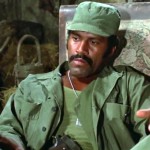
It’s Week 4 of the 2013 Italian Film Culture Blogathon hosted by the Nitrate Diva, celebrating “2013: Anno della Cultura Italiana, Year of Italian Culture”. Here at WeirdFlix, we continue our exploration of Italian war film, affectionately known as “macaroni combat”.
When you talk about macaroni combat films, one name inevitably comes up. Writer-director Enzo G. Castellari has been called “the poor man’s Peckinpah.” While he may not achieve the cynical greatness of that particular auteur, he certainly knew how to make action movies on the cheap. His crowning achievement is perhaps The Inglorious Bastards (1978), not to be confused with the similarly titled Quentin Tarantino homage. Indeed, Tarantino’s appreciation for Enzino borders on the embarrassing, but it did manage to bring Castellari’s films and the whole macaroni combat genre to the fore.
The Inglorious Bastards (1978) stars Bo Svenson, Fred “The Hammer” Williamson, Peter Hooten, Michael Pergolani, and Jackie Basehart as the titular “Bastards”, but they get some help along the way from Raimund Harmstorf, Michel Constantin, Debra Berger, and Ian Bannen. The literally hundreds of German soldiers that get shot up, blown up, knifed, and run over by a train are nameless fodder for the most part, but they do a great job of flying through the air or wiggling morbidly as they get riddled with pretend bullets.
6’4″ Swede Bo Svenson is perhaps best known for portraying real life Tennessee tough guy Buford Pusser in two Walking Tall films and an NBC television series (1981). These made him the highest paid television personality at the time, eclipsed only by Johnny Carson. A 6-year stint in the U.S. Marines gives him credibility as a soldier, and his athletic accomplishments are considerable and varied. He was a U.S. Armed Forces Far East Heavyweight Division Judo Champion in 1961, won silver in the 2009 USA Judo National Championships at the age of 68 despite suffering three broken ribs just a few days earlier, and was subsequently inducted into the Martial Arts Masters Hall of Fame later that year. He’s a licensed NASCAR driver and played in NHL Celebrity hockey games against the Chicago Blackhawks and Boston Bruins Legends teams. Admittedly, his cinematic accomplishments aren’t nearly as impressive, but he’s always gotten work and continues to perform into his 70s.
After playing in Super Bowl I and retiring from the NFL, Fred “The Hammer” Williamson starred in a string of blaxploitation films, many with titles too racially charged to list here, others alongside fellow blaxploitation icons Jim Brown and Jim Kelly. While filming The Inglorious Bastards, Fred used the equipment and crew to shoot his own movie, Mr. Mean (1977), without the producers’ knowledge. Bastards was later re-cut and rereleased as G.I. Bro to capitalize on his appeal.
Peter Hooten was primarily a television actor with the notable exception of a supporting role in the Dino de Laurentiis debacle Orca (1977). Hooten has a difficult role with the largely unlikeable loudmouth Tony. With considerably more hair and a moustache to make a porn star jealous, he would appear in the little-seen TV pilot for Marvel Comics’ Dr. Strange (1978). We’ll certainly get to that one someday.
Michael Pergolani debuts here and really shines as the thief with the long hair and impressive moustache, a kind of Italian take on the anachronistic hippy Sgt. Oddball from Kelly’s Heroes (1970). Jackie Basehart made his acting debut back in 1967 alongside his father, Richard Basehart, in the Voyage to the Bottom of the Sea television series. Though born in Santa Monica, he appeared in a number of Italian television and film productions.
Raimund Harmstorf was primarily a veteran of German television, but appeared in the Jack London adaptation of The Call of the Wild (1972) with Chuck Heston. This likely contributed to his casting in Lucio Fulci’s White Fang films. Michel Constantin appeared in one of the first Italian Dirty Dozen rip-offs, Dirty Heroes (1967). Both went on to appear in a wide variety of Italian films.
Debra Berger is the daughter of spaghetti western veteran William Berger (Ringo’s Big Night (1966), If You Meet Sartana Pray for Your Death (1968), Sabata (1969)). She appeared in three films with him, Terminal (1974), The Marvelous Visit (1974), and Parapsycho – Spectrum of Fear (1975). Though nominally the love interest here, she isn’t afraid to get her hands (and hair) dirty as French partisan Nicole.
Lastly, as Col. Charles Thomas Buckner, Ian Bannen is certainly the most celebrated actor in the cast. He was nominated for a Best Supporting Actor Oscar for The Flight of the Phoenix (1965). After Bastards, Bannen was originally slated to replace David Niven as Miller in the Alistair MacLean sequel Force 10 from Navarone (1978), but clashed with a producer and was, in turn, replaced by Edward Fox. With a long list of credits that includes such British genre stalwarts as Fright (1971), Doomwatch (1972), and From Beyond the Grave (1974), I’m sure this won’t be the last time we talk about Mr. Bannen.
The Inglorious Bastards (1978)
France 1944. Our opening shot is straight from Tarantino’s own playbook. From total darkness, a canvas covering is lifted away so that we can see out the back of a truck where military prisoners are being loaded towards our viewpoint.
Our first two “Bastards” are a nervous Berle Hayes (Jackie Basehart) and the more resigned Canfield (Fred Williamson). As one MP describes, “Hayes went AWOL and the black guy’s a killer.” Up next are Tony (Peter Hooten) and the gloriously mustachioed Nick (Michael Pergolani). Tony is our resident clown and smooth talker. A pal hurries up to lay twenty bucks at three-to-one odds that Tony avoids court martial yet again, but considers his bet lost when Tony confesses that he’s up for murder this time around. Nick is a thief and pickpocket, displaying his sleight of hand skills by lifting the watch right off the lead MP.
Last, but certainly not least, is an officer. Lt. Robert Yeager (Bo Svenson), U.S. Army Air Force, may be a great fighter pilot, but jaunting off in his plane to visit his girlfriend in London was frowned upon by his superiors. After two warnings, the third time was the charm and landed him a court martial. In his brown leather aviator’s jacket and sunglasses, Yeager is a tower of swaggering insubordination.
With our cast of misfits assembled, we get a good look at the impressive motor pool before heading out to division HQ. There are some other prisoners in the truck, but they might as well be wearing red Starfleet uniforms because those unnamed grunts are clearly doomed. While changing a tire, the truck comes under fire by a German Stuka. Canfield is the first to flee and dive into a ditch, but the MPs gun down the next two prisoners to follow his lead. During the multiple strafing runs and execution of fleeing prisoners, Canfield is able to sneak around and choke the lead MP out from behind. This gives Yeager the opening to secure a submachine gun of his own and get the MPs to surrender.
Once the “Bastards” are free of their shackles, Yeager force marches the MPs back the way they came at gunpoint. He motivates them with bullets kicking up dust at their heels. He offers the enlisteds the MPs’ jeep and takes the truck, but, since he seems to have a plan, they race to jump on board. His plan involves a run for the Swiss border, only 160 miles away. Canfield likes the idea since, “them Swiss banks have mucho dinero.”
Subsequent scenes reinforce the roles of Nick as one-man supply depot, Yeager as take-charge leader, Berle as cowardly mechanic, and Tony as a loudmouthed gambler. After a German mortar team forces them to flee their truck, they take shelter in a gutted farmstead. There, Tony, perhaps out of boredom, tries to goad Canfield into a fight using racist rhetoric. He also claims to have worked for “Big” Mike Banion back in Chicago, but that’s likely just bravado. Yeager puts an end to the shenanigans with his SMG.
As they’re planning their next move, Canfield uncovers a lurker in the hay loft. It seems Adolf Sachs (Raimund Harmstorf) was an escaped prisoner himself, only from the other side. Yeager speaks fluent German and is opposed to Tony’s idea of summary execution. Instead, he believes Sachs can guide them to the border and freedom.
While Canfield seems comfortable laying low during a German ambush, Yeager can’t help himself. Duty calls. Soon, both he and Canfield are ambushing the ambushers. All goes well as they cross the forest until they run afoul of a German convoy, complete with halftracks. The only play is to let Adolf take them prisoner. There is a surprising amount of German spoken in the film, all without subtitles, but body language and inflection make it clear what is being said, if not the exact words being used. It’s actually very well done and keeps the authenticity high in the face of over-the-top action and silly schemes.
Once separated from the majority of their foes, the “Bastards” drop the ruse and overpower their would-be captors. Adolf even tosses the Lieutenant a submachine gun, validating his status as an honorary “Bastard”. Victory is short-lived as they find themselves cheering for Allied bombers up until the bombs start dropping a little too close for comfort. The sequence ends with an impressive matte composite shot of the bombed out convoy. Our erstwhile “heroes” are forced to pick through the wreckage to find a salvageable vehicle. In doing so, they manage to score a veritable arsenal’s worth of small arms and some German uniforms.
Tasked with forging some paperwork, Nick invents correction fluid seven years early, but, given his reputation, it’s easy to see why he would be unable to take credit. Both the paperwork and uniforms are insufficient to get past the first checkpoint, especially once the Germans get a glimpse of Canfield, but the rearmed “Bastards” shoot their way out with ease.
Stopping at a river to wash and rest, Nick is astonished and overjoyed to see some German girls skinny-dipping. Keeping up their charade as German soldiers, the boys frolic in the spray until Canfield blows their cover. The girls prove to be heavily-armed, and send the would-be Casanovas packing under a hail of submachine gun fire.
While the “Bastards” hide under a bridge like a band of trolls, their truck out of fuel, Canfield spies a truck with seven Germans on the other side. Adolf asks to be allowed to parlay with them to hopefully get refueled. Tony warns Yeager against trusting the German deserter.
Once Adolf converses with the seven, he turns and shouts “Americans! Americans!” It’s deliberately vague who opens fire first, but it’s crystal clear that Adolf is the first to get gunned down. The ensuing firefight leaves all seven dead, along with Adolf, and Berle injured. Tony is smug in his “I-told-you-so” attitude.
As the gang rests and tends to the wounded Berle, they find themselves surrounded by the French Resistance. The armed partisans ask for Lt. Sykes, so the “Bastards” all point to a confused Yeager, who plays along and meets with their leader, Veronique (Michel Constantin).
Veronique thinks their mission was suicide with seven, but will be nearly impossible with only five, especially since one of them is clearly black. Yeager is still at a loss. Tony soon figures out that they made a horrible mistake and killed their own men. Adolf wasn’t ratting them out, he was trying to tell them the Germans were also disguised Americans, a misunderstanding Adolf paid for with his life.
Berle is shown to Nicole (Debra Berger), the closest they have to a proper nurse. Believing him to have volunteered for Sykes’ mission, she thinks he must be very brave. He’s immediately smitten with the young lass. When Tony starts harassing Berle about her, Canfield takes a very physical exception. Once again, their altercation is interrupted by Yeager, who explains that their assumed mission is to attack a train.
Tony feigns injury to get some quality time with Nicole. He proves to have the gift of gab when he wants to, and sweet talks her into sympathy, but not much more before Col. Buckner’s arrival is imminent. Bonfires are lit, and Buckner makes a hell of an entrance via late night parachute drop.
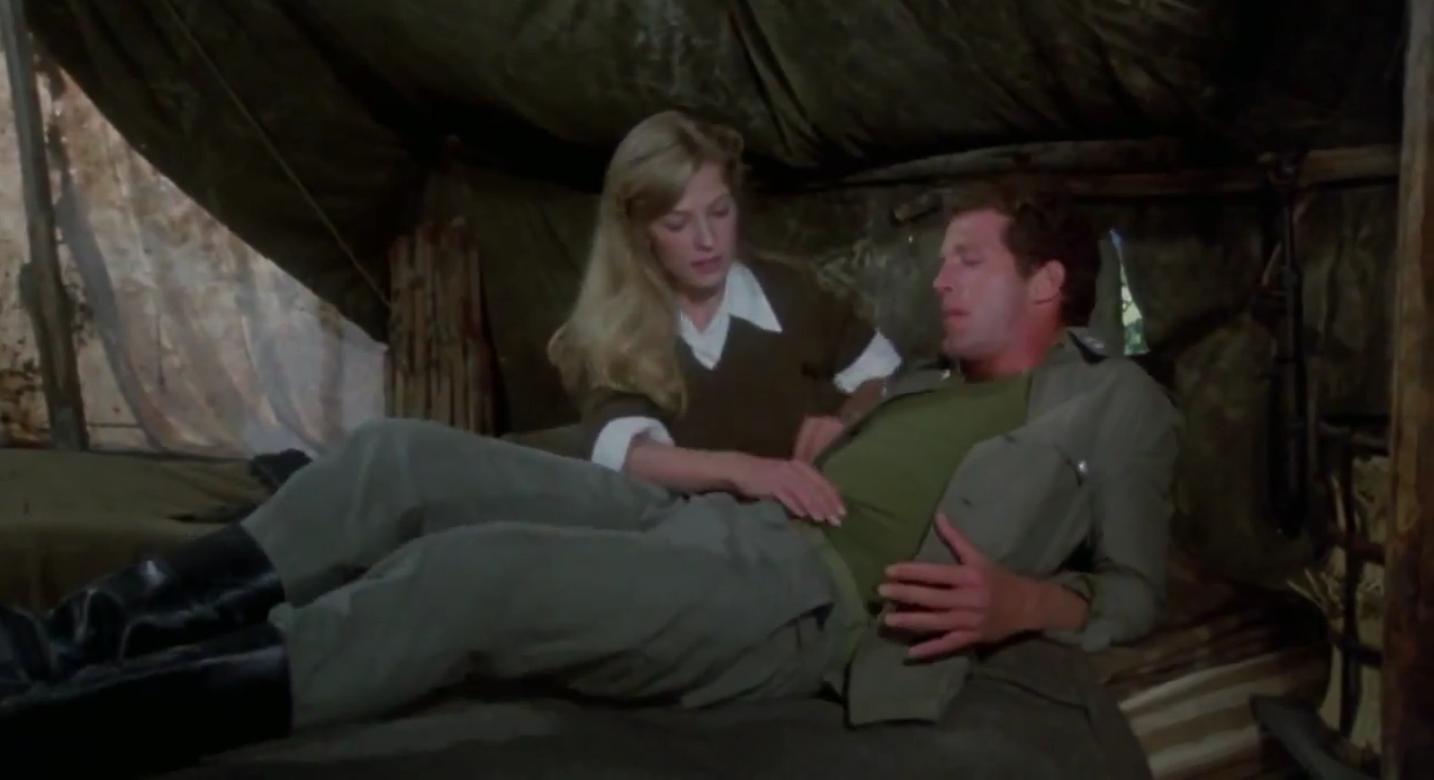
Tony (Peter Hooten) benefits from the healing hands of
Nicole (Debra Berger) in The Inglorious Bastards (1978)
Col. Buckner can tell immediately that the Lt. Sykes he’s supposed to rendezvous with is not the blonde giant standing in the glare of headlights. Yeager gets the Colonel to keep his cover, drawing him off to parlay off-camera. By the time the story thus far is told, it’s the next morning, and Buckner is beside himself with anger.
The Colonel is unimpressed with the “Bastards” before him, but Berle offers that his brother was a railroad man and he can run a locomotive. Yeager offers that he can speak fluent German and his men have proven themselves in combat. When Buckner promises a firing squad for all of them, Yeager pulls a pistol and tells him about the promise he made to the “Bastards”, to get them to Switzerland.
Yeager sets out to raid an SS Command Post in a nearby castle for a working truck with Canfield and Buckner playing prisoners. The sequence, though picturesque, is primarily played for laughs and without gunfire since the Italian government had suddenly banned all firearms on set, even those that fired only blanks. What few prop guns are used in the castle raid are never fired. Instead, the “Bastards” use a slingshot, a halberd, a dagger, and a crossbow to effect their plan. With the tone of the other related hijinks, it makes for a surprisingly fun and lighthearted diversion.
a gang of deserters… cutthroats… and thieves?”
Once the truck is secured and the SS Command Post disabled, Buckner is clearly impressed. Briefing the team on their mission, he explains the main objective is a rail car laboratory carrying a prototype of the new V-2 rocket warhead. The aim of the mission is to capture the gyroscope in the rocket’s guidance system. Buckner and Yeager will disguise themselves as rocket experts and smuggle the device off the train.
Berle and Tony will blow a bridge on the train’s route, forcing it to back up and shunt down a side line. When the train has stopped to reverse direction, they will board the train and uncouple the armored car carrying the escort. Canfield and Veronique’s partisans will attack the train and drive it towards the Allied lines.
Nick inquires about his role in the operation. Aside from forging a stack of documents, he’ll be in charge of signalling to Rene that the train has been successfully boarded by Buckner and Yeager, or else Rene will blow the bridge with the train on it.
At high noon, the partisans intercept the command car carrying the two rocket experts. Nick uses it to drive Buckner and Yeager, in disguise, to the rail yard to board the train. Nick watches with glee as his forged papers pass muster. He sets out to covertly signal Rene, but the car’s door is knocked shut, breaking the radio.
Nick is forced to steal a motorcycle and race to the bridge in advance of the train to keep it from being blown up with Buckner and Yeager on board. Meanwhile, Tony, Berle, and Rene all wait at the river bank, trying desperately to hail Nick on the radio while preparing for the worst. Jumping a machine gun nest, Nick’s motorcycle takes a round in the gas tank, but the Macaroni MacGyver seals it up with a comically large wad of chewing gum.
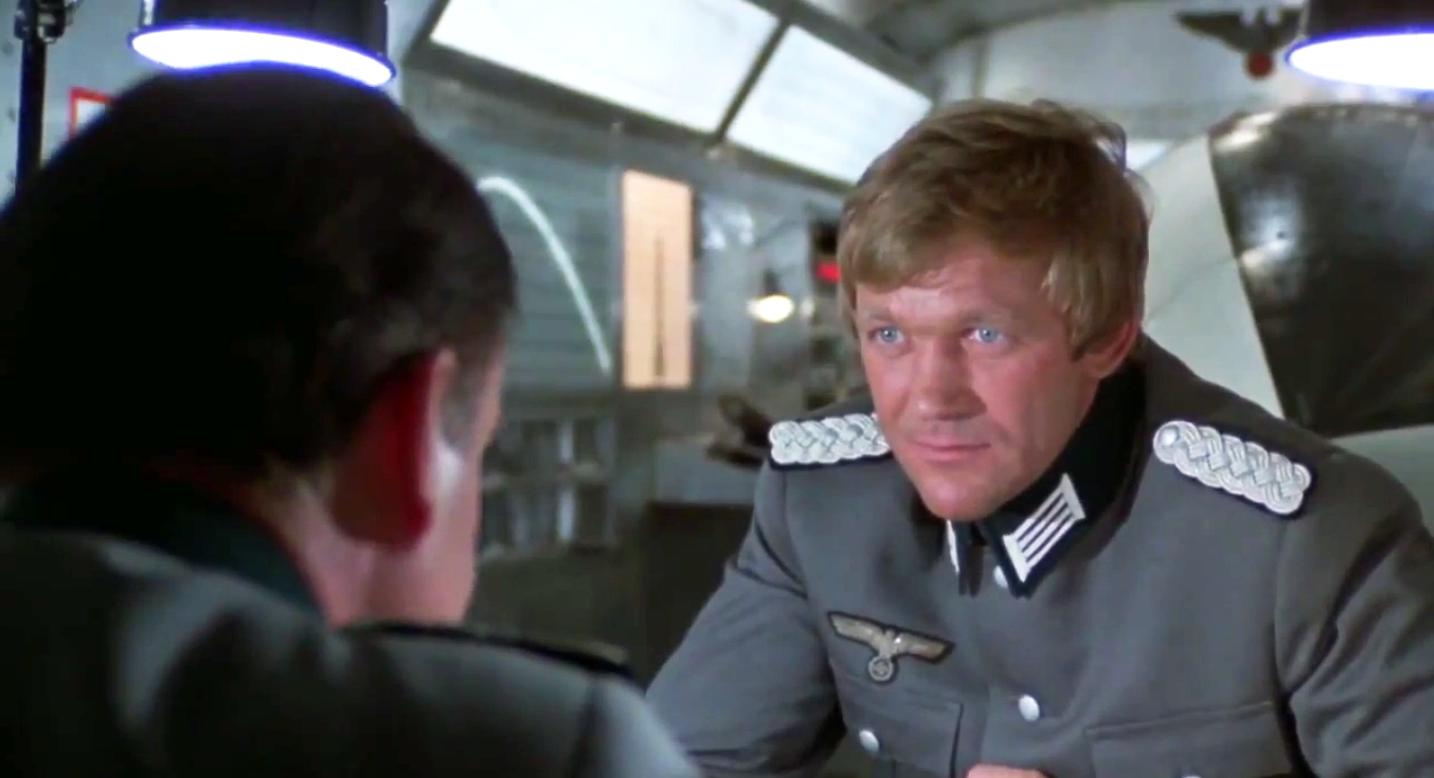
Col. Buckner (Ian Bannen) and Lt. Yeager (Bo Svenson)
bide their time in The Inglorious Bastards (1978)
Looking over the blueprints in the mobile laboratory, Col. Buckner identifies a self-destruct mechanism that will blow the whole rocket and take the lab with it. When the door to the lab unlocks, Yeager creeps in and takes out the remaining rocket scientists.
Within sight of the bridge, Nick runs afoul of a patrol and is shot down. He still manages to crawl his way to the bridge and, with his dying breaths, gives the word to blow the bridge according to plan. As expected, the train stops, and the armed escort gets off to address the situation. During the onslaught, Berle and Tony sneak onto the train and take command of the engine. Tony uncouples the escort car while the Colonel starts dismantling the warhead.
At Pont Mossons, Nicole, Veronique, Canfield, and the rest of the partisans take over the depot. They are soon met with an unpleasant surprise, however. The next locomotive to arrive is not the one they expected with the mobile laboratory attached, but a whole new train full of German reinforcements. Some dismount to retake the station, with Veronique getting a live “potato masher” grenade dropped at his feet.
The rest keep on rollin’, with Canfield and Nicole in pursuit. They split up, and things start happening very quickly like a cinematic runaway train. Berle gets shot in the back while feeding the engine, but finally musters the courage to turn and fire back. Finding him already dead, Tony jumps from the roof of the train onto a signal tower to escape. Buckner gets the gyroscope out, but accidentally activates the self-destruct mechanism. Yeager blocks the trigger with a pencil. Canfield reaches an overpass and drops down onto the train.
He reaches Yeager and warns him about the Germans waiting at the station just before getting shot up by a guard. After eliminating the threat, Yeager checks on Canfield and throws him off the train. “See you in Switzerland!” he shouts.
After bidding farewell to Yeager, Buckner jumps off the train with the gyroscope. Yeager is en route to blow up the rocket when he is shot in the back by a German hiding under a desk. As the Germans lurk in ambush at Pont Mossons, Yeager pulls the pencil free and blows up the train. It derails and crashes through the station in spectacular fashion. The ensuing HO scale destruction is a far cry from John Frankenheimer’s The Train (1964). Still, there’s some cool shots of German soldiers running around on fire, and the music gets suitably dramatic to make the big finish satisfying, if admittedly silly-looking.
Nicole catches up to Tony amidst the flames to give us our supposed happy ending. Despite the romantic musical cues and his heroic actions, I can’t be won over. He’s a jerk. More appropriately, I guess, he’s a real “Bastard”. Roll credits.
In all, a super fun time. The film is no Saving Private Ryan (1998) and certainly not meant for WWII purists, but in the vein of war comics like Sgt. Fury and his Howling Commandos, there’s worse ways to spend 99 minutes. Some day, I’ll probably take a look at Enzo’s other big macaroni combat epic, Eagles Over London (1969), but first, we’re going to see how macaroni combat changed with the times. The 1980s were the era of Rambo and rampant historical revisionism, and Italian genre film wasn’t going to let low-budget American actioners have all the fun. Warbus (1985) will be rolling into this blog real soon. Don’t miss it.
Also, be sure to click on the poncho above to explore some of the other entries in the 2013 Italian Film Culture Blogathon hosted by the Nitrate Diva. There’s some great work being done to honor “2013: Anno della Cultura Italiana, Year of Italian Culture”.
Macaroni Combat… “It’s a Hot Smell”
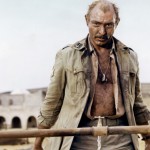
Okay, I’m going to confess something that may undermine what little credibility I might have as a film blogger. I don’t like John Wayne. I like his movies even less. This iconoclastic opinion has threatened to end friendships. I’m usually forced to steer the conversation back towards classic film icons I do appreciate and adore, like Humphrey Bogart, James Cagney, and Jimmy Stewart.
For largely this reason alone, I spent most of my youth under the mistaken impression that I didn’t like war movies or westerns, since John Wayne was all over both, especially in anything that ran on a Turner cable network. Long before I had ever heard the term “spaghetti western,” I discovered Clint Eastwood and his “Man with No Name.” Now, here was a western anti-hero I could wrap my mind around.
The Duke’s movies always felt trite and condescending to me. It was like a grown man telling me that if I didn’t eat my peas then Santa Claus wouldn’t bring me presents. I wanted to shove him into a muddy ditch with flag in hand. Sergio Leone’s western characters didn’t wear white hats or black; their morality was colored in shades of grey. Imagine my surprise and joy to find this same ethic applied to the Italian war films of the same era, “macaroni combat” if you will.
In honor of “2013: Anno della Cultura Italiana, Year of Italian Culture” and the 2013 Italian Film Culture Blogathon hosted by the Nitrate Diva, let’s take a look at one of my favorite entries in the genre. Commandos (1968) stars spaghetti western icon Lee Van Cleef as MSgt. Sullivan, a soldier haunted by the war that threatens to break his mind, body, and soul. If the dreaded Afrika Korps doesn’t kill him, there’s a good chance Captain Valli (Jack Kelly) might, either by malicious intent or sheer incompetence.
WARNING! The screen shots in this post are press photos and not actual screencaps from the film. They are a suggestion of scenes rather than a genuine representation of what was filmed. Most prints are so murky that you’ll never see the film remotely this clear. Mine looks like it was filmed through a fish tank.
Commandos (1968)
Commandos is based on a short story by Israeli Roger Corman understudy Menahem Golan. Golan had cut his teeth as a production manager/assistant director/production assistant on Corman’s The Young Racers (1963) alongside a little upcoming director named Francis Ford Coppola. For Commandos, Golan’s story got some spit and polish from screenwriter Dario Argento just before his big break, director Armando Crispino, and Stefano Strucchi. Director Crispino had only two directing credits under his belt before helming Commandos, the Gina Lollobrigida comedy Pleasant Nights (1966) and the spaghetti western John the Bastard (1967).
October 1942 On the eve of the American landings in North Africa,
A secret American commando base,
Somewhere in the Mediterranean.
MSgt. Sullivan begins by briefing his commandos on their cover identities, that of Italian fascists from Brescia in the shadow of the Alps. This provides ample excuse for an opening credits sequence largely composed of stock footage being viewed by the titular commandos. They are also shown footage of their new “allies”, Erwin Rommel’s infamous Afrika Korps.
The arrival of untested Captain Valli doesn’t exactly fill Sullivan with confidence. “There’s a machine in the brass department. It’s designed to screw Sullivan.” He greets Valli with a mocking Nazi salute, then tries to play it off as part of his cover while only reluctantly taking the offered handshake. Sullivan has good reason to be wary. Valli replaces Lt. Freeman, a man Sullivan and his pal Dino grew close to during the grueling Battle of Bataan in the Pacific Theater, with the three of them being the only survivors from their unit.
Jack Kelly (Forbidden Planet, Maverick) plays Valli as straight as an arrow, all smiles, sunglasses, and starch, stiff as a flagpole. He’s clearly educated and bright, but also has no battle experience, and is unused to leading men of action. This becomes apparent as Sullivan awkwardly introduces Valli to the team and vice-versa. These men were chosen because of their Italian heritage and special training, but Valli is surprised to find some are actually Italian-born with an oblique reference made to Chicago mob ties.
Afterwards, Valli tries to allay some of Sullivan’s fears in private. To say it goes poorly is a grand understatement. Sullivan puts down his drink and tries to hear the captain out, but the booze has already done its damage and he’s beyond surly. Valli may know his plan “exactly, right down to the last detail,” but Sarge knows firsthand how worthless plans are in the face of the enemy.
“Exactly? What the hell do you know about ‘exactly’? You got a lot of bright ideas, Captain, but do you know what killin’ is? Exactly? With these? (jazz commando hands) Or with this? (draws a commando knife) You stick the knife in his throat or gut and twist, and you’ve got to hug him tight because if he gets loose he might get away before the job’s done. Do you know what blood smells like, Captain? It’s a hot smell. And you can get things messed up, too, Captain, because most men die hard. But how the hell would you know? Exactly.”
Lee Van Cleef’s aggressive body language and post-production dubbing go far beyond mere chewing up the scenery into full on over-the-top awesome that leaves nothing standing in its wake. It’s like an F-5 of testosterone-driven machismo. Wait until his character meets the enemy!
The next day, Valli gives our mission briefing in front of a ludicrously large map. Sullivan and Valli take a moment to clarify that they will take no prisoners and that they will have to preserve their cover identities at all costs. Their German “allies” will be just a short distance away.
On the night flight to the oasis, Sullivan spots a commando with a picture of his sweetheart. He takes it away, examines it, then rips it into pieces in what seems, at first, to be a moment of pure churlishness. When Valli and others get upset, Sullivan points out the trademark for Empire State Photographers, a dead giveaway that they’re Americans.
Parachuting in and approaching the target oasis goes surprisingly well. There’s some classic commando cliché from burying their parachutes to snipping barbed wire to silenced pistols.
One enemy soldier takes a moonlit stroll for a cigarette, unable to sleep on account of the oppressive heat, and avoids the carnage. This will become important later.
Valli and Sullivan personally secure the radio room to prevent any calls for assistance. During the raid, we get our first glimpse that all is not well with MSgt. Sullivan. He goes all thousand-yard stare, and we see a flash of fire from his perspective. When asked what’s wrong, a guilty “nothing” is all he can muster as he pulls on his gloves for the dirty work of killing men in their sleep.
They’re briefly interrupted by a watchman rousing some men for shift change. Sullivan and Dino take care of that with some thrown commando knives to the back. Clearly, this ain’t their first rodeo.
Meanwhile, our cigarette-smoking insomniac stumbles upon one of the murdered sentries and instead of raising the alarm, heads to the garage for a rendezvous. He and his comrades try to roll out, but are spotted, identified as visiting Germans, and gunned down. So much for silence and stealth. An all-out firefight ensues in which Valli grows a conscience and stops Sullivan from executing unarmed prisoners out of hand. Valli even “shoots down” Sullivan’s very practical suggestion of using the Italian prisoners as cover to take a couple of machine gun nests. Instead, they’re forced to waste a precious bazooka shell.
They soon find out what the machine guns were so desperately defending when they kick in a door and find the deliciously scandalous Marilù Tolo clutching a pillow. By 1968, Tolo was already a veteran of many peplum and Eurospy films, with a few spaghetti westerns thrown in for spice. Here, she’s the last working girl standing and didn’t leave with her erstwhile business partners, choosing to corner the market instead. Square jaw that he is, Captain Valli immediately puts her on lock down.
Valli has questions for his prisoners, most notably Lt. Tomassini (Marino Masé). Question # 1 is “What were those three Germans doing here?”, and one of the other prisoners can’t help but point out that there were four, and one of them must have gotten away. This drives Sullivan crazy which, in turn, makes Tomassini clam up. Valli plays his trump card. If Tomassini won’t cooperate, then all of his men will be summarily executed. Conscience only goes so far.
Marino Masé is almost slumming here as the captured officer, having previously appeared in Luchino Visconti’s costume period epic The Leopard and Jean-Luc Godard’s The Carabineers, both in 1963, with the lead role in the latter. Still, he was no stranger to genre fare, having appeared in the peplum Goliath at the Conquest of Damascus and Nightmare Castle, both in 1965 and both alongside the incomparable Helga Liné. He even got some commando experience in the short-lived CBS television series Jericho (1966), in which he played a French weapons expert on the side of the Allies.
With the lives of his men in jeopardy, Lt. Tomassini has no choice but to answer the question. The Germans were mining the well and they were expected to leave this morning. That puts a definite time limit on Valli’s little take and hold operation.
As if to hammer home the danger, we immediately cut across the desert, where the Afrika Korps are rolling around in their Panzers (actually Italian and American tanks, but I’m not going to take them too much to task for that; Crispino’s no Spielberg). Here, we’re introduced to Oberleutnant Heitzel Agen, “The Professor”, (Joachim Fuchsberger). Agen is fatigued by being in the rear with the gear, and his men jokingly compare him to the “Desert Fox” himself, Erwin Rommel. There’s clearly some tension between the aristocratic “Professor” and his working class troops, “the field promotion type” as he disparagingly refers to one.
The story of Joachim “Blacky” Fuchsberger is almost more interesting than the film itself. Billed here as Akim Berg, he was an honest-to-goodness(?) Hitler Youth, recruited as an elite paratrooper and shipped off to the Eastern Front at 16. Joachim was wounded and captured by the Red Army and spent time as a prisoner of the Soviets, British, and Americans.
After the war, he worked as a coal miner and an engineer, as well as in advertising and radio. He tried a bit of acting, but really hit his stride in Krimis, German adaptations of mystery stories written by Edgar Wallace. Joachim appeared in the first, Face of the Frog (1959), and would go on to make a dozen more through 1972.
In the early 1960s, he talked producer Horst Wendlandt out of accepting film rights from Ian Fleming, thinking it too expensive to transition from black-and-white Krimis to a full color exotic spy film. Joachim had been Wendlandt’s pick to play Fleming’s spy character “James Bond”. For his part, Fuchsberger isn’t bitter and is still acting as of this writing.
Meanwhile at the oasis… The Italian water trucks show up, and it’s time for charades. Everyone act natural.
End Act I, right at about the 30-minute mark.
Complications predictably ensue. A kicked soccer ball keeps Lt. Tomassini from turning an invoice into a rescue note, a commando intercepts a horny Italian with his heart and wallet set on visiting Adriana, and the missing fourth German is too wounded from his cigarette break slash firefight to raise much of an alarm.
In the radio room, they find out the Germans are on their way for dinner. Adriana is “encouraged” to drink herself unconscious. To keep him from losing his cool, Sullivan is put in the attic to observe through a knothole in the floor.
“Professor” Agen meets Captain Valli for the first time and seems pleased to make his acquaintance, happy to break bread with a fellow officer. Oberleutnant Rudi immediately wants to know where his engineers are. Lt. Tomassini tries to convince them that they have already left, and Valli even jokes that they may have gotten lost or deserted. This only serves to infuriate their commander, who trained them himself, and Agen has to calm Rudi down.
During their dinner conversation, we learn that “The Professor” was an entomologist before the war, and he seems wistful about those bygone scholarly pursuits. Captain Valli and Agen bond over quoting Goethe. Sullivan, rattled about Germans wandering around unchecked, interrupts and almost blows their cover.
This whole sequence reminded me of the “Twenty Questions” scene in Quentin Tarantino’s Inglourious Basterds, especially the brief cut to Sgt. Hugo Stiglitz gritting his teeth to keep from choking the Nazi officer to death while haunted by his own personal flashback hell just like Sullivan. Given his pedigree, it’s hard to imagine Tarantino was not influenced by Commandos.
Sullivan goes out alone for some air and to clear his head of Bataan flashbacks when he runs afoul of our missing engineer. He dispatches him with a gunshot, but that draws everyone out from their spaghetti dinner. After an awkward pause, someone takes credit for shooting at a jackal. “Professor” Agen jokes that he hoped it was commandos. The Germans depart, happy and none-the-wiser, taking us to…
End Act II, right at about the 60-minute mark.
Lt. Tomassini returns to his men, and we can see some distinct juxtaposition here as they are loyal to each other, unlike either Valli’s or Agen’s relationship with their respective troops. It’s escape time, and the ever popular “This guy’s sick” routine works like a charm. Soon, they’ve got guns and head out under cover of darkness. They steal a truck and sabotage the others with a little sand in the ol’ gas tank.
The transition here’s a little rough as morning comes in the blink of an eye. Tomassini and his boys find themselves pursued across the dunes by Valli, Sullivan, and the commandos in a salvaged truck. Sullivan warns that if they reach the Germans, it’s all over but the shooting.
The Italians get reckless and get themselves stuck in the sand. As they’re pushing with the commandos coming over the horizon, we get a great exploitation shot of one man getting caught under the wheels. Still, it gives them the traction they need to get out of their rut.
Close enough to shoot at each other, the chase is now in full gear. Even Valli loses his patience and executes a surrendering Italian with his sidearm. Dino takes a bullet just as the Italians drive into a mine field, and Valli calls for a halt. As Sullivan struggles to bandage his friend, an explosion in the distance indicates the final fate of Tomassini and the escapees. We get a glimpse of the truth, however, and see a critically wounded Lt. Tomassini crawl to his feet.
Even though the engineers have yeat to be found, the Afrika Korps is moving out to engage the Americans. Oberleutnant Heitzel Agen asks for permission to go fill up the water trucks at the oasis and bid farewell to his newfound friend, Captain Valli, over a bottle of cognac. After he leaves, Tomassini stumbles into the camp a bloody mess.
Just as Sullivan is burying Dino, a plane flies over, dropping a parcel. The note orders Valli and the commandos to move out as their mission has been scratched. Taking and holding the oasis was for naught. The commandos, used to this sort of behavior from the high command, take it all in stride, but Valli refuses to abandon his meticulous plans without confirmation via radio. Sullivan, enraged, takes charge with pistol in hand, insubordination be damned. “The Professor” and company arrive in time to prevent Sullivan from ending Valli’s commission with a bullet.
Agen inquires about the missing Lt. Tomassini, but is called to the radio room before getting even an improvised answer. With the headset on, “The Professor” is warned that Tomassini escaped from a team of American commandos and that he should hold tight until they can arrive with their tanks.
Now, it is Agen’s turn to bluff. He breaks into the cognac and shares a toast with Valli, thanking him for their pleasant dinner and camaraderie. Agen presses his luck by ordering Sullivan to drink with him, and Sullivan disobeys by dropping the bottle to draw his pistol, predictably causing all hell to break loose for our explosive finale.
Bazookas, tanks, dynamite, and even an anti-aircraft gun all come into play as the commandos fight for their lives and not much else. Agen finds he cannot kill his friend Valli, but Sullivan sure has no qualms about killing “The Professor”. The carnage is nearly absolute, and one has to assume that even Adriana buys the farm as the whole oasis compound gets destroyed.
In the end, with only a single unnamed soldier to a side left, they lay down their arms and set about burying their dead… together.
Finis.
War sucks. How delightfully Italian.
Check out some of the other contributions to the 2013 Italian Film Culture Blogathon. Here at WeirdFlix, I’m sure we’ll be cooking up some more “macaroni combat” real soon. Just be warned, “It’s a hot smell.”
Happy Birthday, WeirdFlix!
Hard to believe it’s been one year since we started this shindig.
And, yes, I know it’s technically a Father’s Day cake. Just shut up and eat it.
40 Years Ago Today…
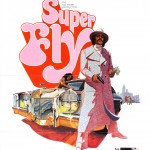
…Youngblood Priest (Ron O’Neal) decided to walk away from the life in Super Fly (1972). While a successful cocaine dealer, Priest has been formulating an exit strategy. He’s going to flip thirty kilos of coke in four months and walk away with one million dollars, enough to leave the perils of being a “pusherman” behind forever. Of course, Priest can’t do it alone, and with that much money at stake, you can never be sure who you can trust.
Gordon Parks’ Shaft (1971) not only showed that blaxploitation films could be profitable, it saved MGM from bankruptcy. Gordon Parks, Jr. followed in his father’s footsteps with Super Fly just a year later. Filmed on a budget of only $300,000, it pulled in over $30 million, echoing Priest’s big score.
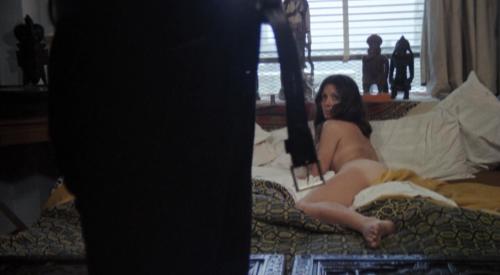
Youngblood Priest (Ron O’Neal) leaves Cynthia (Polly Niles)
to begin the first day of the rest of his life.
Ron O’Neal stars as the ambitious Youngblood Priest. Ron would return to direct and star in the sequel, Super Fly T.N.T. (1973), which takes our “hero” out of Harlem and into the exotic locations of Rome and Africa. Super Fly T.N.T. would be released just one day after the similarly themed Shaft in Africa, though both struggled to capitalize on the success of their respective franchises.
When we first meet Priest, he is abruptly exiting the bed of his white trophy girlfriend, Cynthia (Polly Niles). He seems to have it all, hot and cold running bitches, a swank pimpmobile, and a wardrobe to die for. Still, he is a man unfulfilled. As he explains to his partner Eddie (Carl Lee), Priest is tired of the trials and tribulations of the cocaine biz.
Eddie is considerably taken aback at Priest so casually dismissing what he considers to be the American Dream. “You gonna give all this up? Eight track stereo… color TV in every room… and can snort a half a piece of dope every day?” Still, loyalty draws Eddie into Priest’s scheme to flip thirty keys in four months with a split down the middle so each man walks away with half a cool million.
“Look, I know it’s a rotten game, but it’s the only one The Man left us to play, and that’s the stone cold truth.” — Eddie
Their first step in acquiring such volume is to reunite with Priest’s old mentor, Scatter (Julius Harris). Priest pulls a reluctant Scatter out of retirement, where he’s slumming as a cook in the kitchen of a hip nightclub. This favor will be the last he’ll grant to Youngblood, come what may.
Sheila Frazier plays Georgia, Priest’s soul sister and confidante. Despite her luxurious attire and furnishings, she would settle for less if it would take the burden of street life off of Priest’s shoulders. She is his motivation, the person pushing the “pusherman” to seek a better life for the two of them. She does not judge him, however, as she explains during their bubble bath palaver.
A photo montage of their plan in motion is set to “Pusherman” by The Curtis Mayfield Experience (who performed an abbreviated version of the song earlier in the nightclub scene), and it is clearly ahead of its time. Photographed by Gordon Parks, Sr., the sequence follows the first kilo of cocaine, from weighing to cutting to packaging to distribution to sale into the hands of its end consumers, New Yorkers from all walks of life. The soundtrack, all written and composed by Curtis Mayfield, is one of the few to outgross the film that featured it and became an instant funk classic.
Sig Shore, born in Harlem, produced all three Super Fly films and would direct the third, The Return of Superfly (1990), without O’Neal. Shore would also put in a cameo appearance (billed as “Mike Richards”) at the end of this film, taking the role of Deputy Commissioner Reardon. Sadly, The Return of Superfly would be his last film before succumbing to chronic pneumonia at the age of 87.
“Man, people been using me all my life. Yeah, that honky’s using me. So what? Y’know, I’m glad he’s using me, because I’m gonna make a piss pot full of money, and I’m gonna live like a prince, a ****ing black prince!” — Eddie


